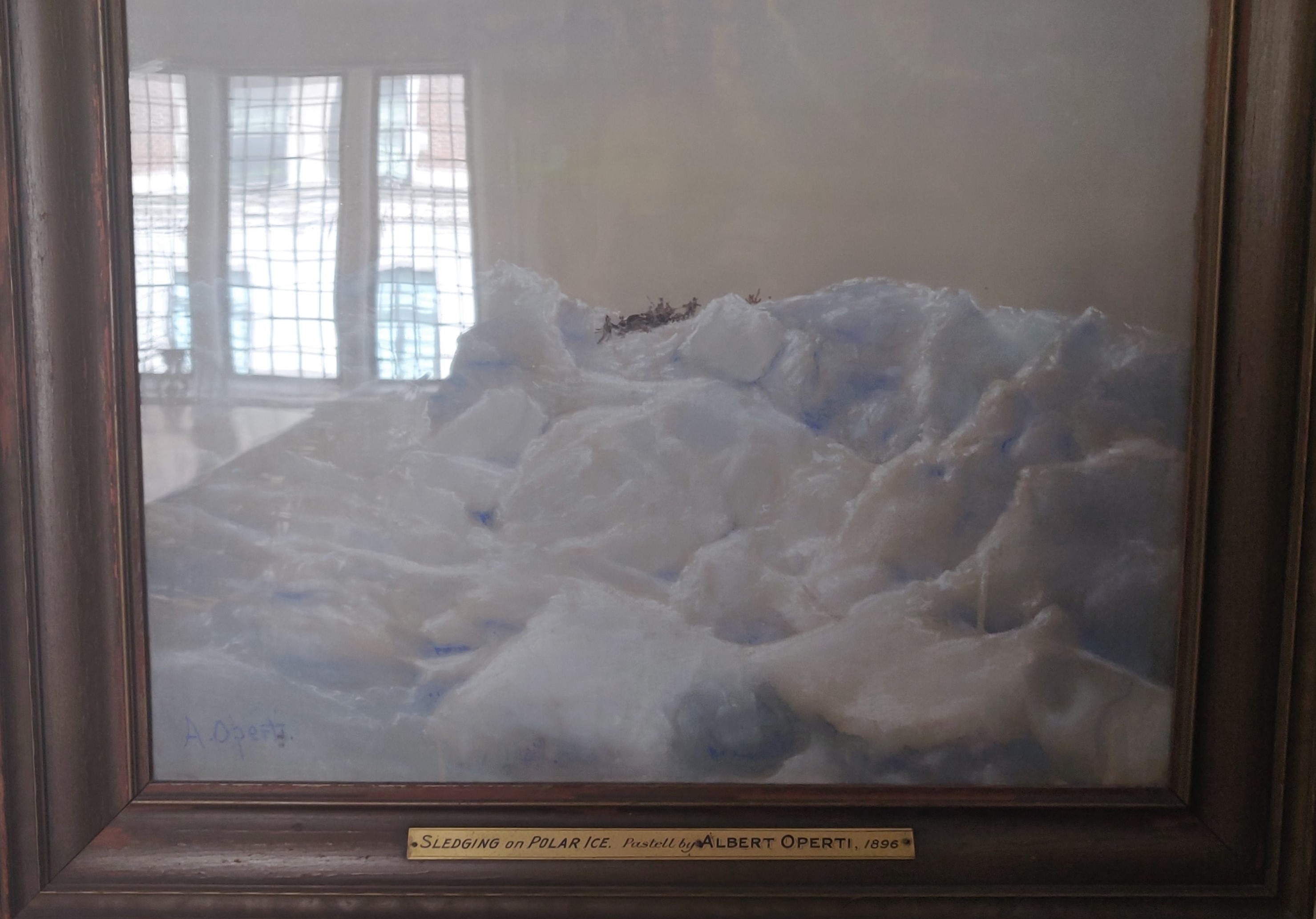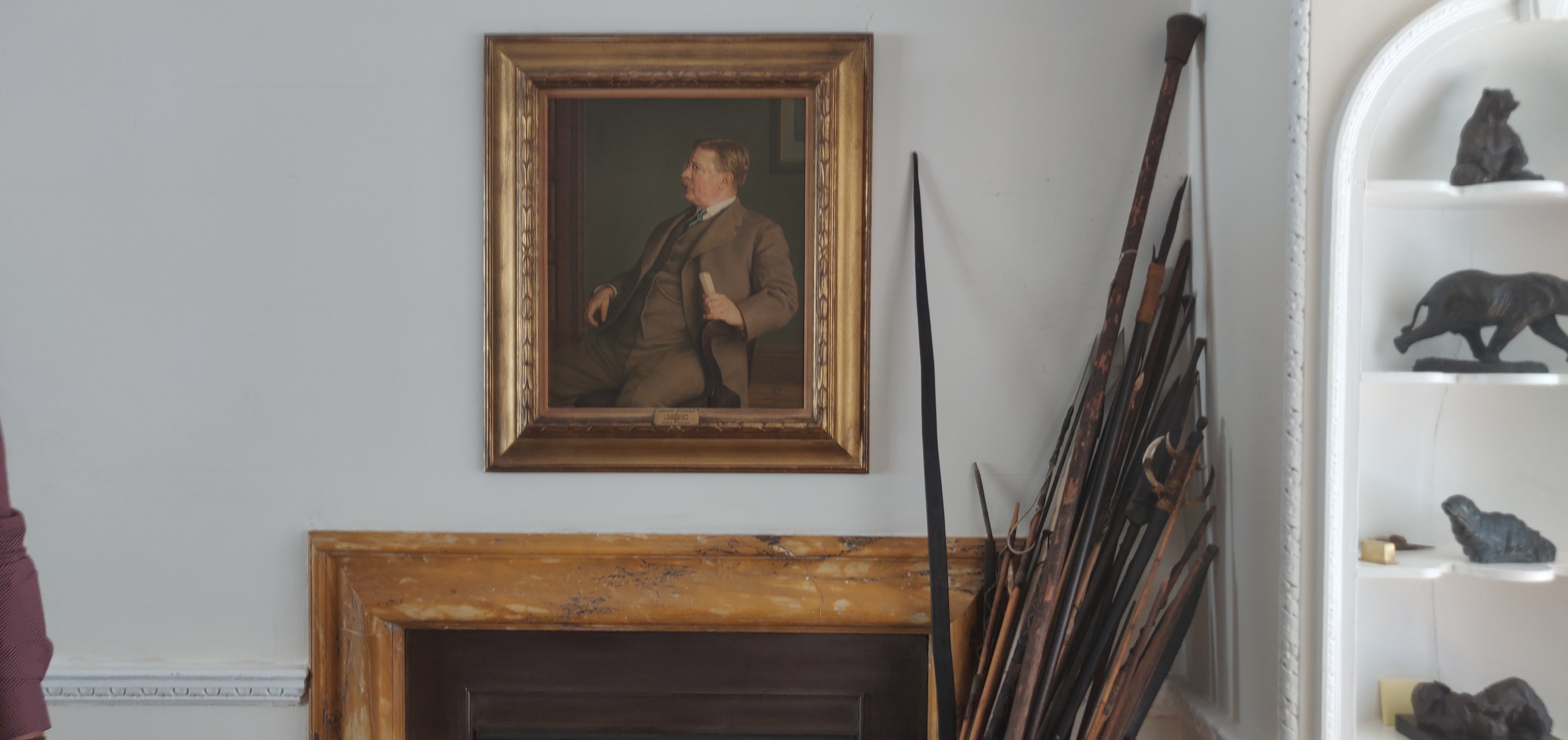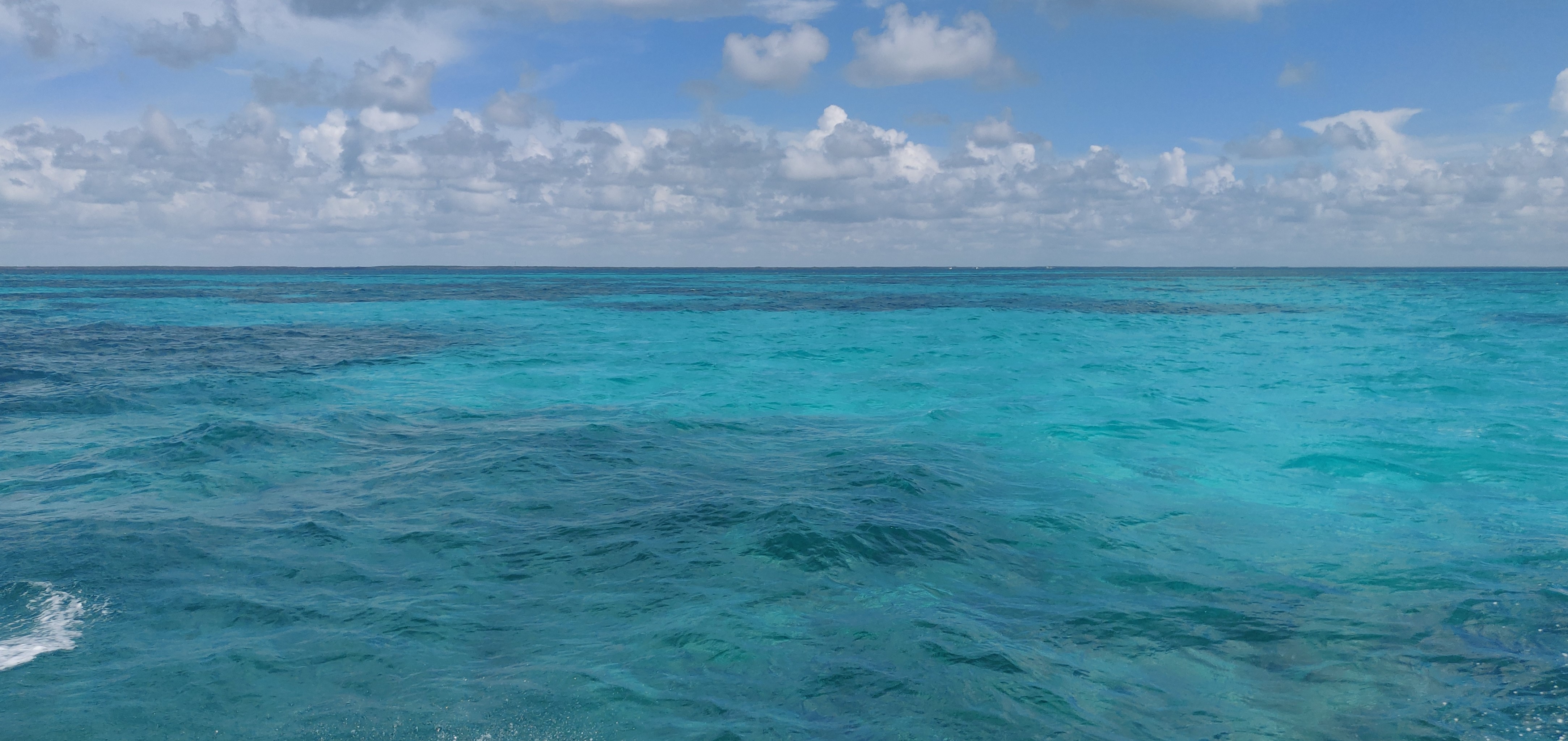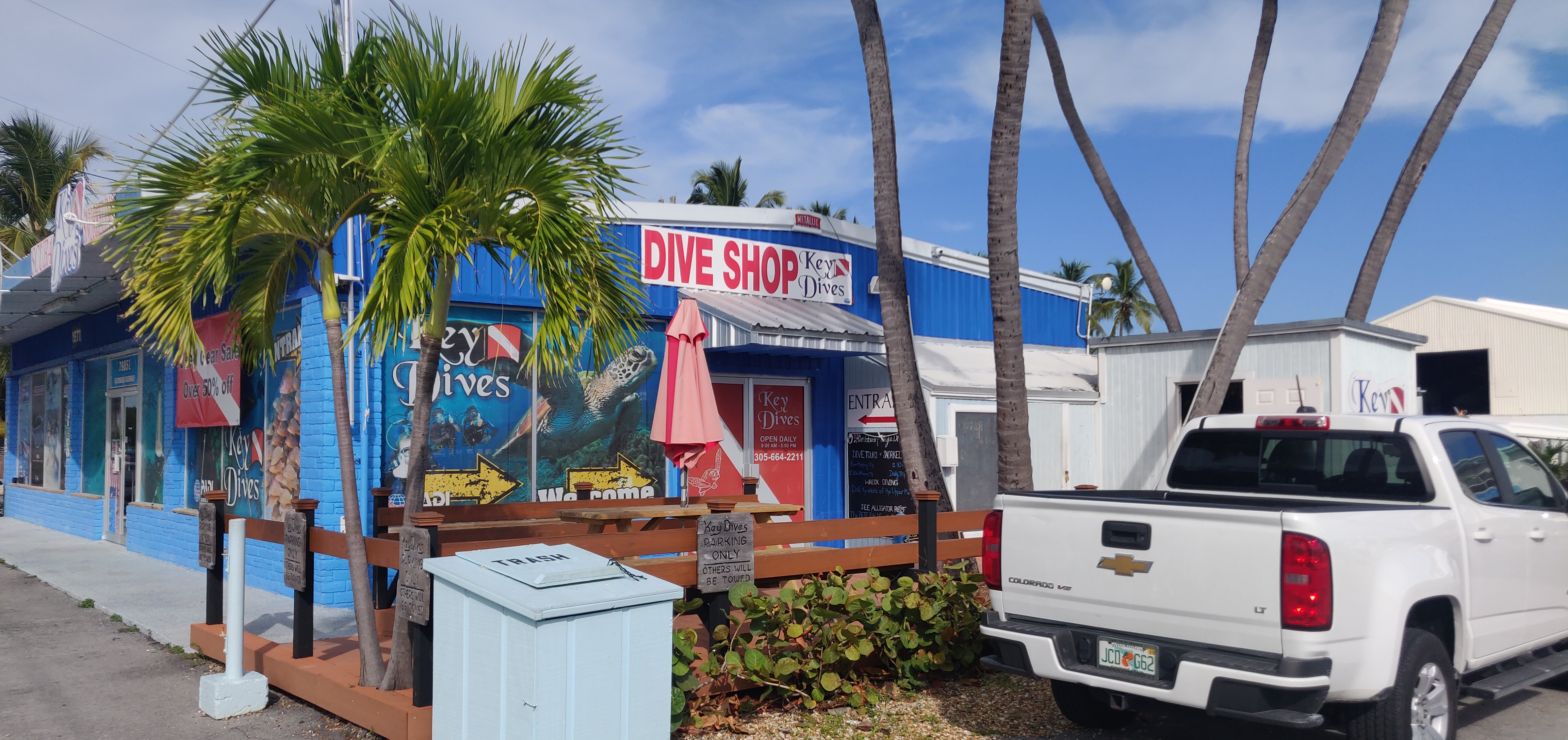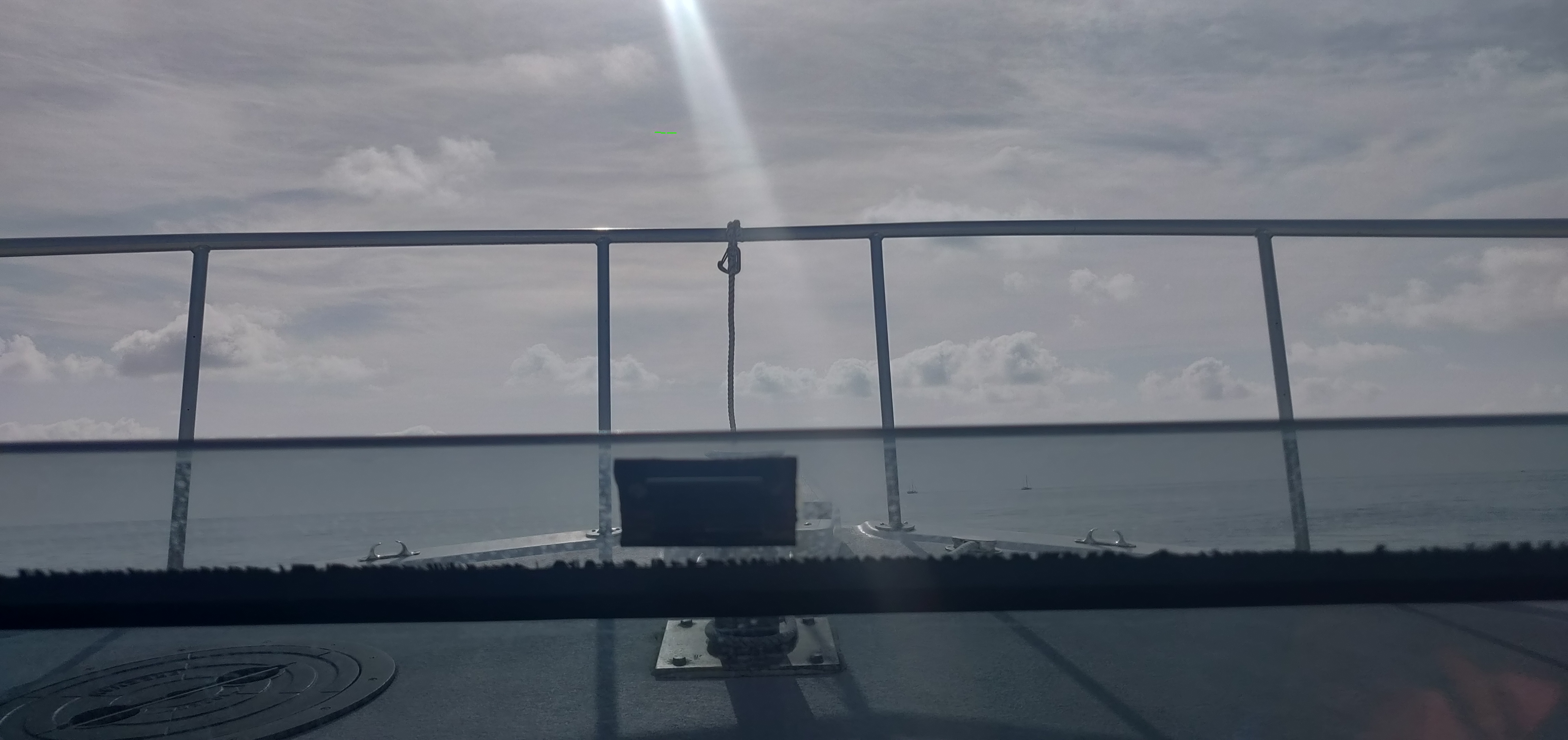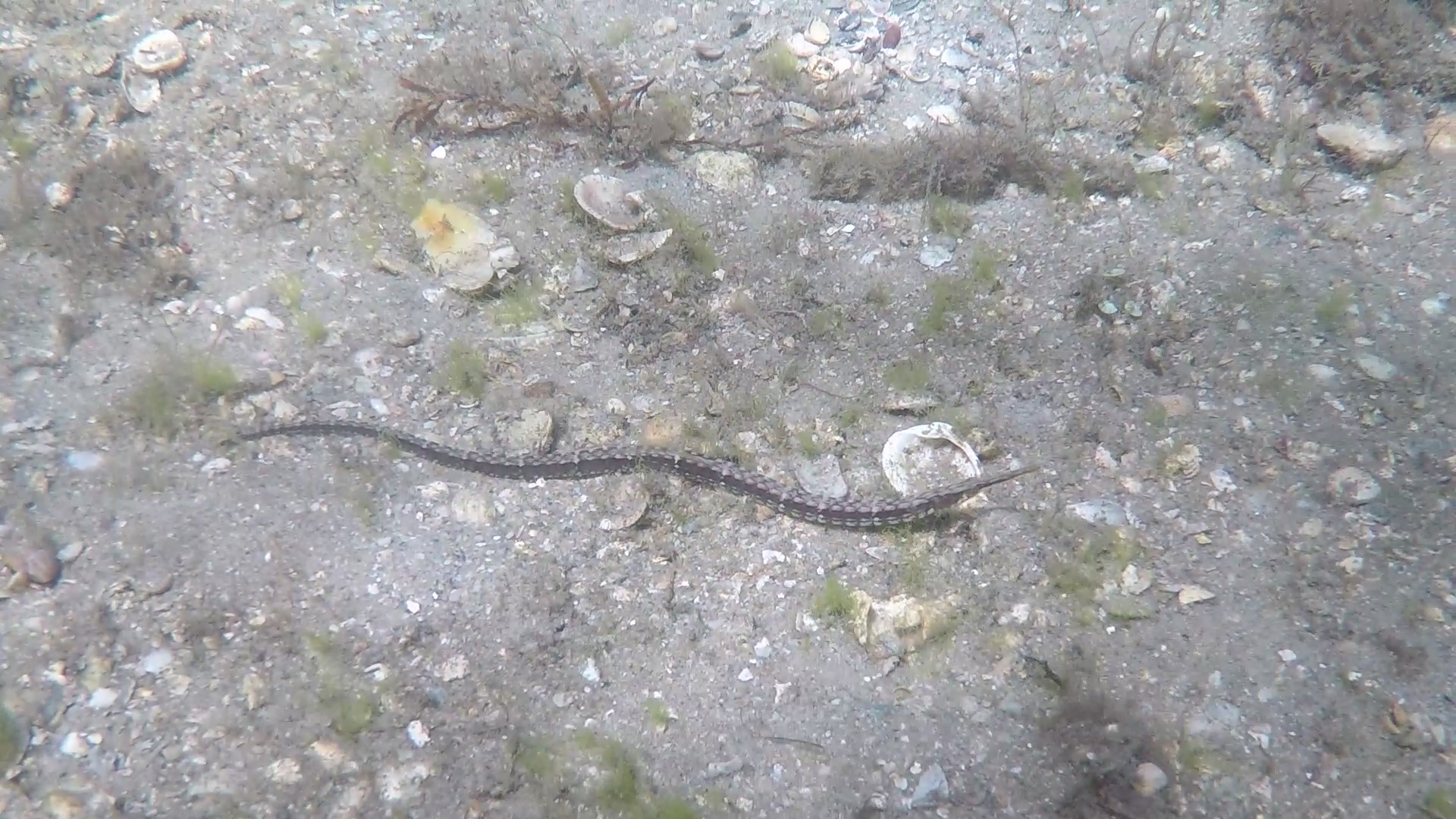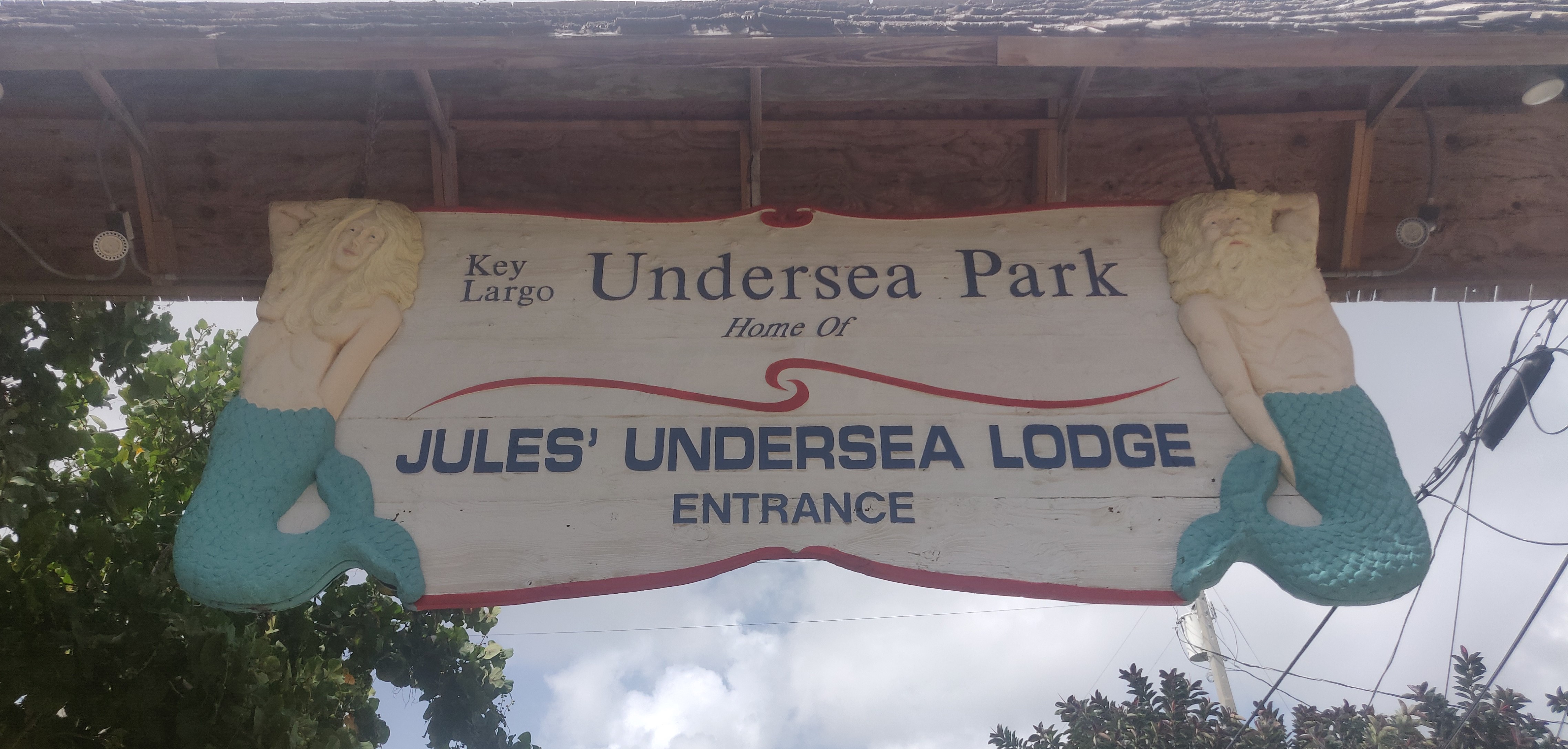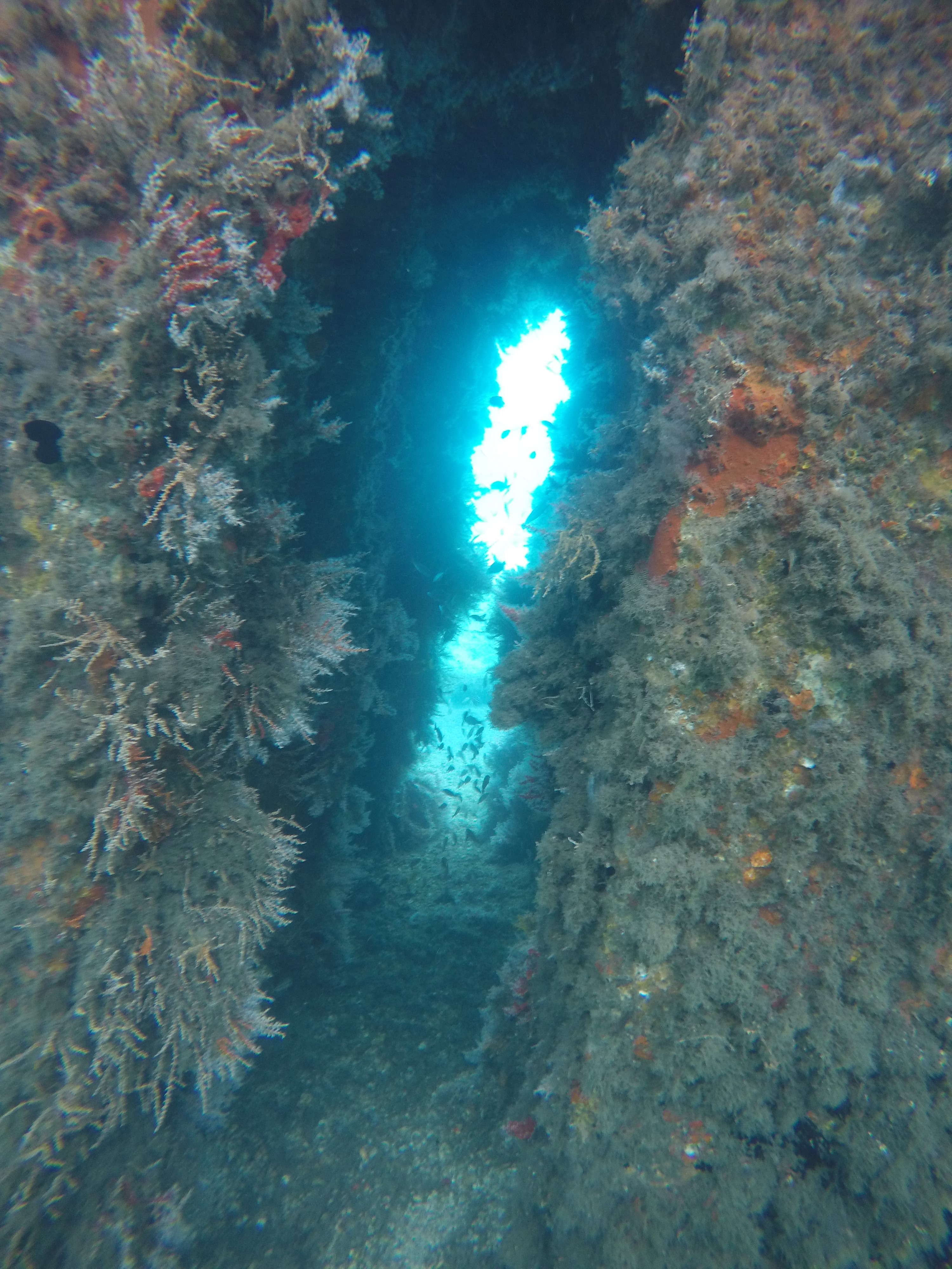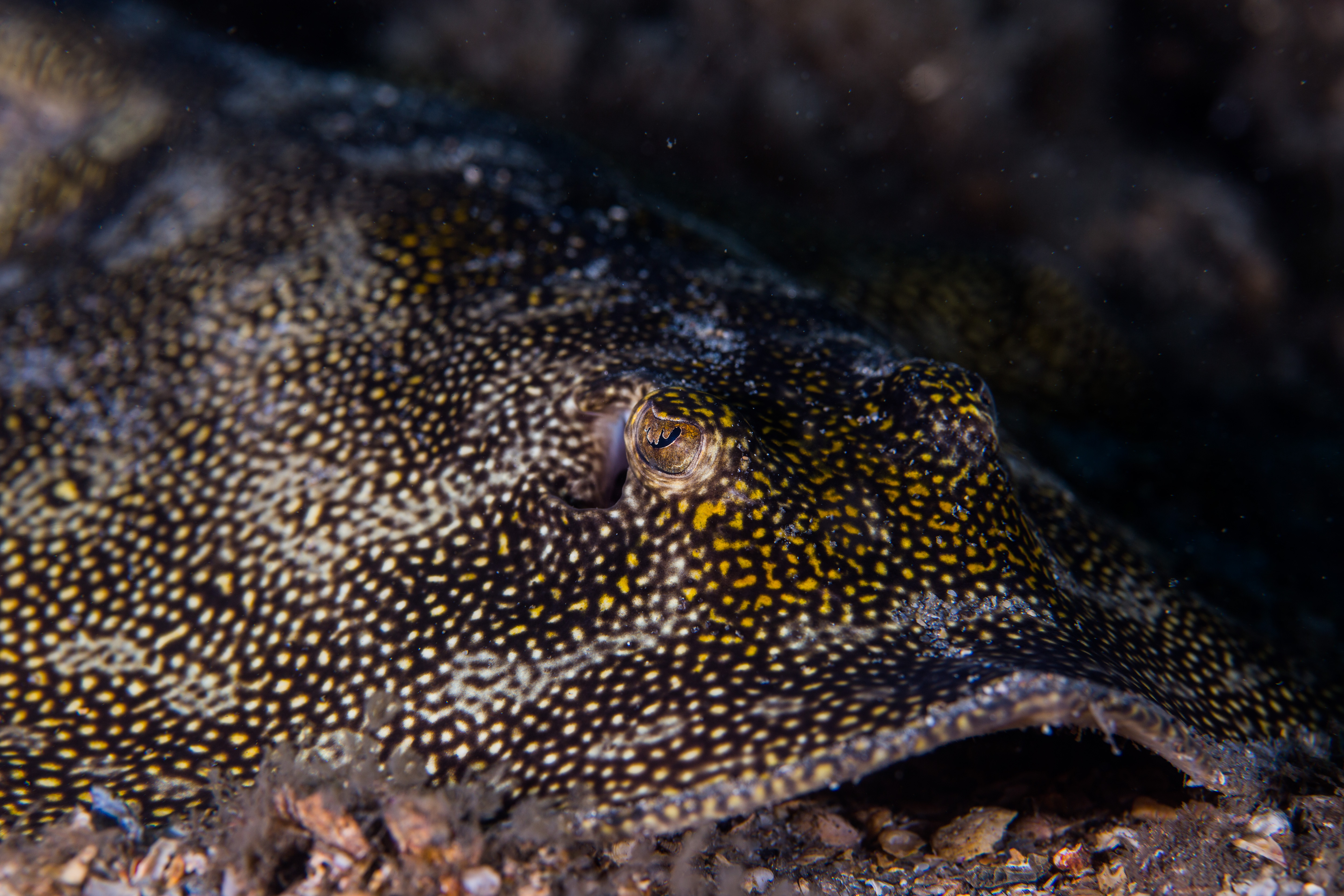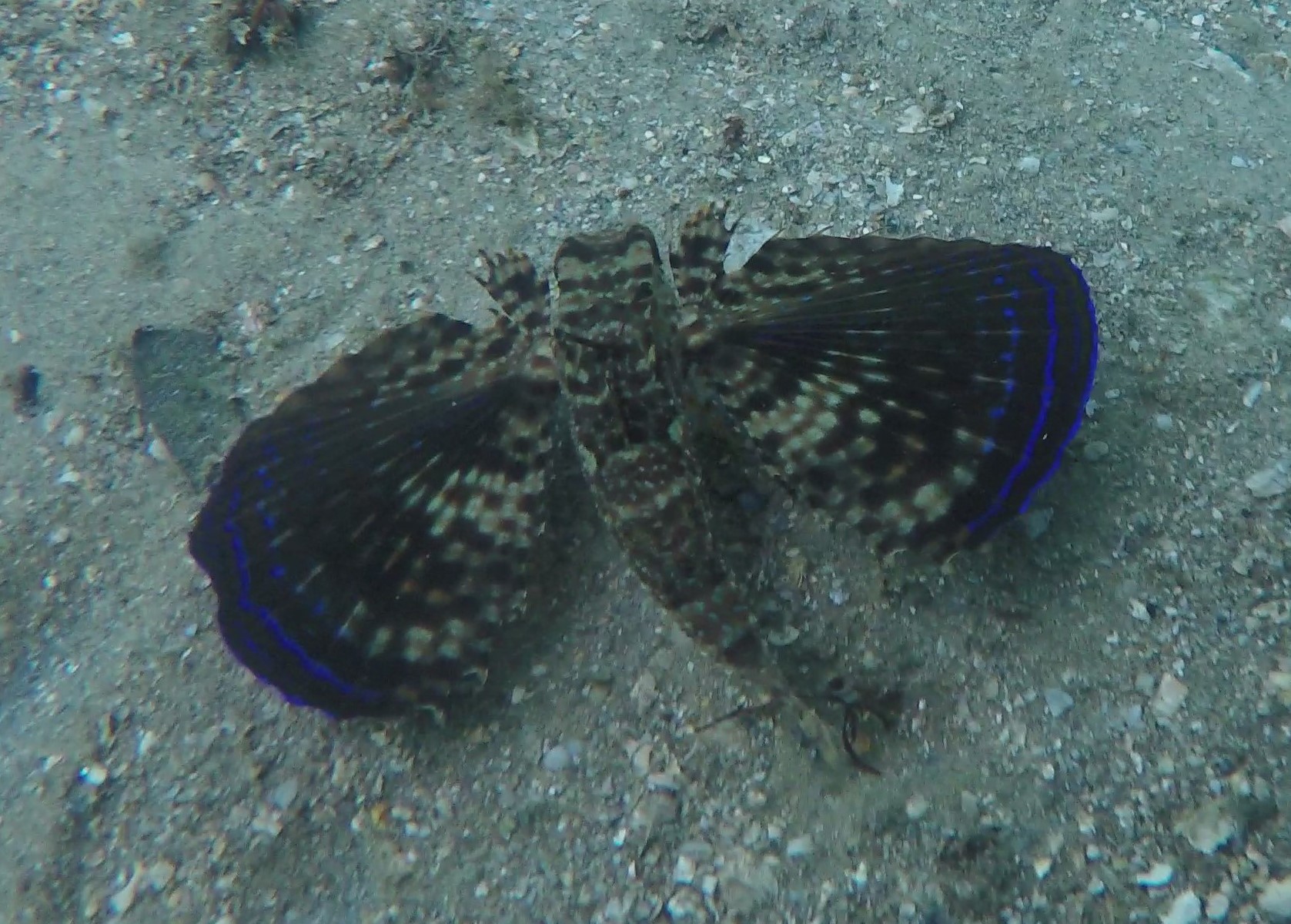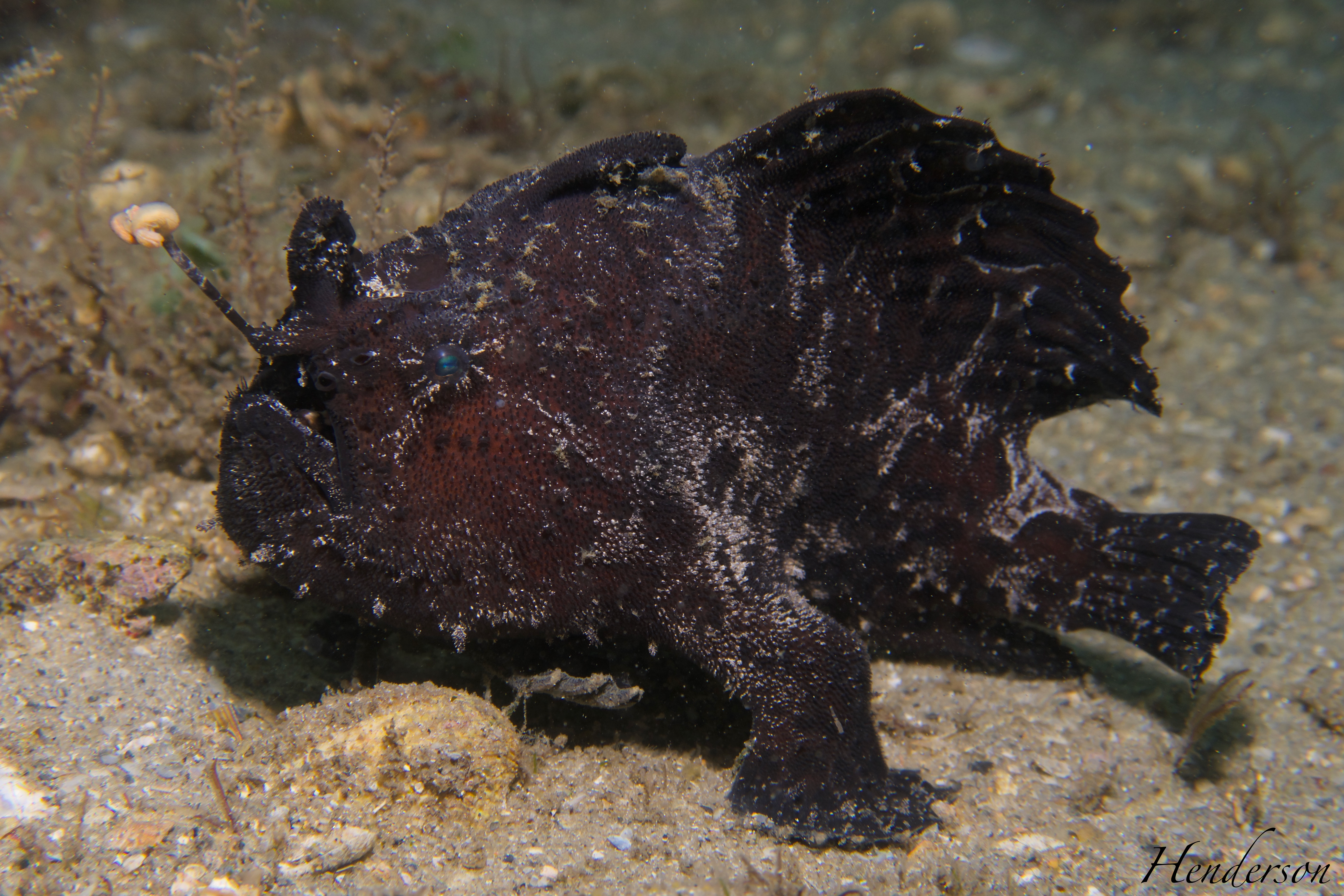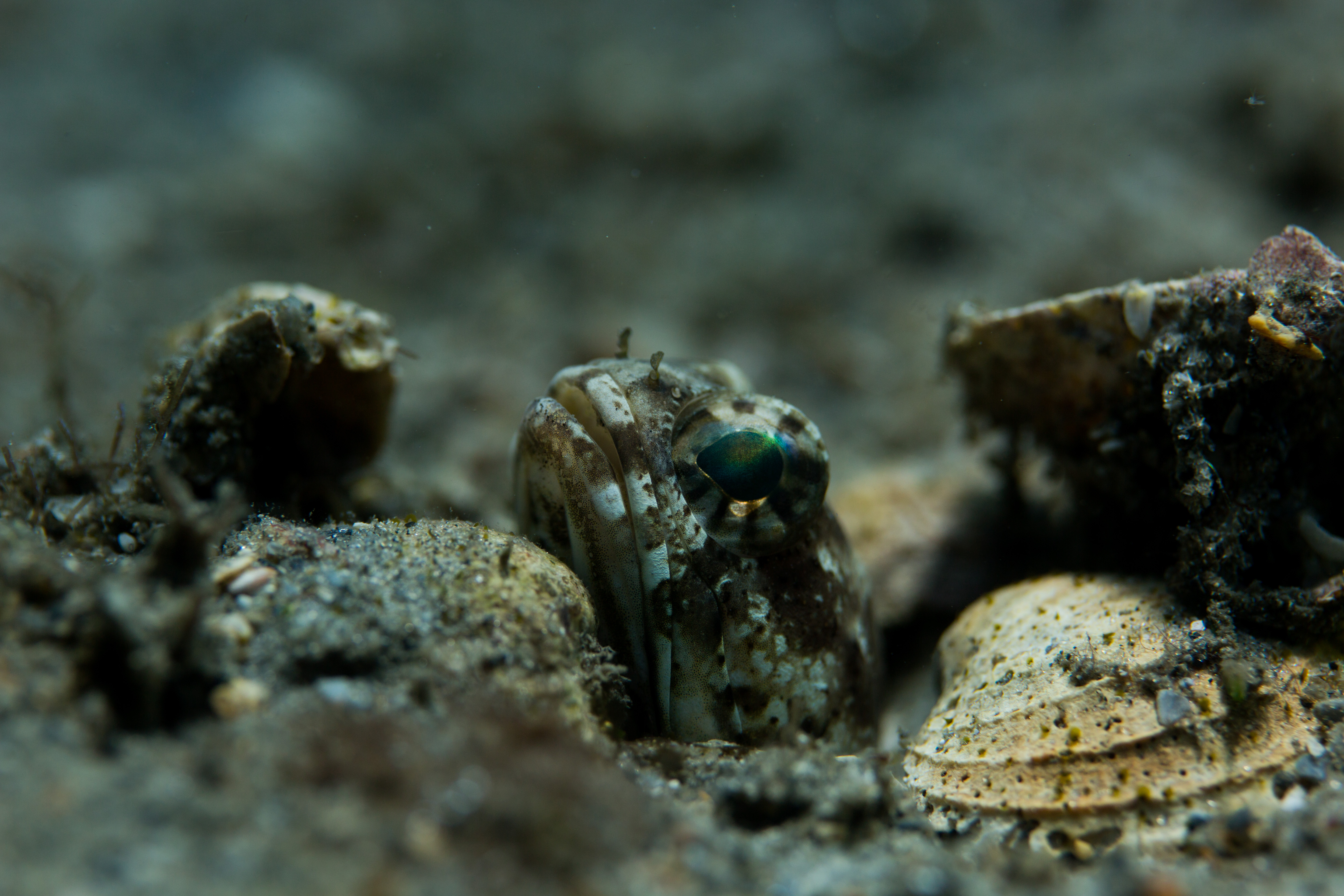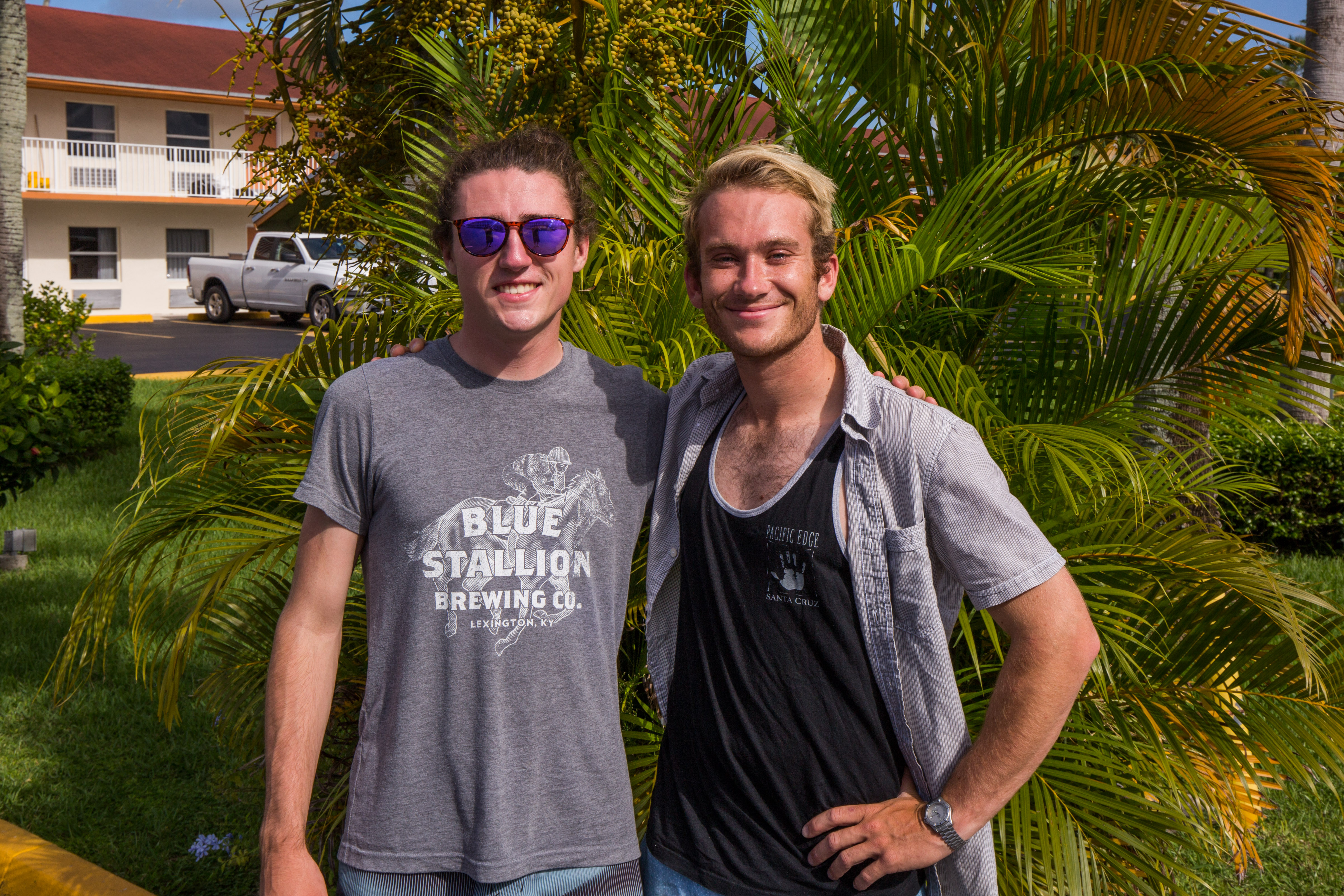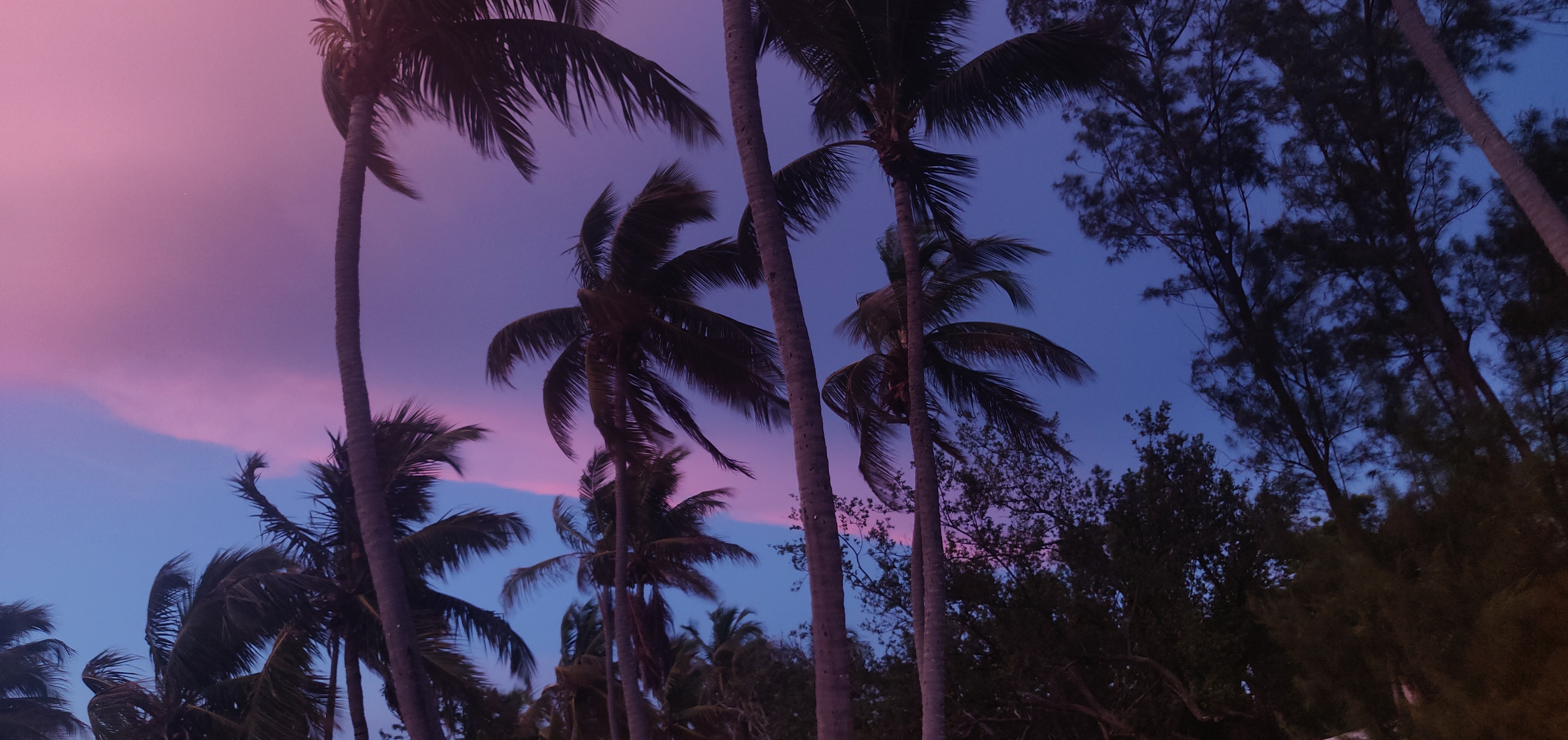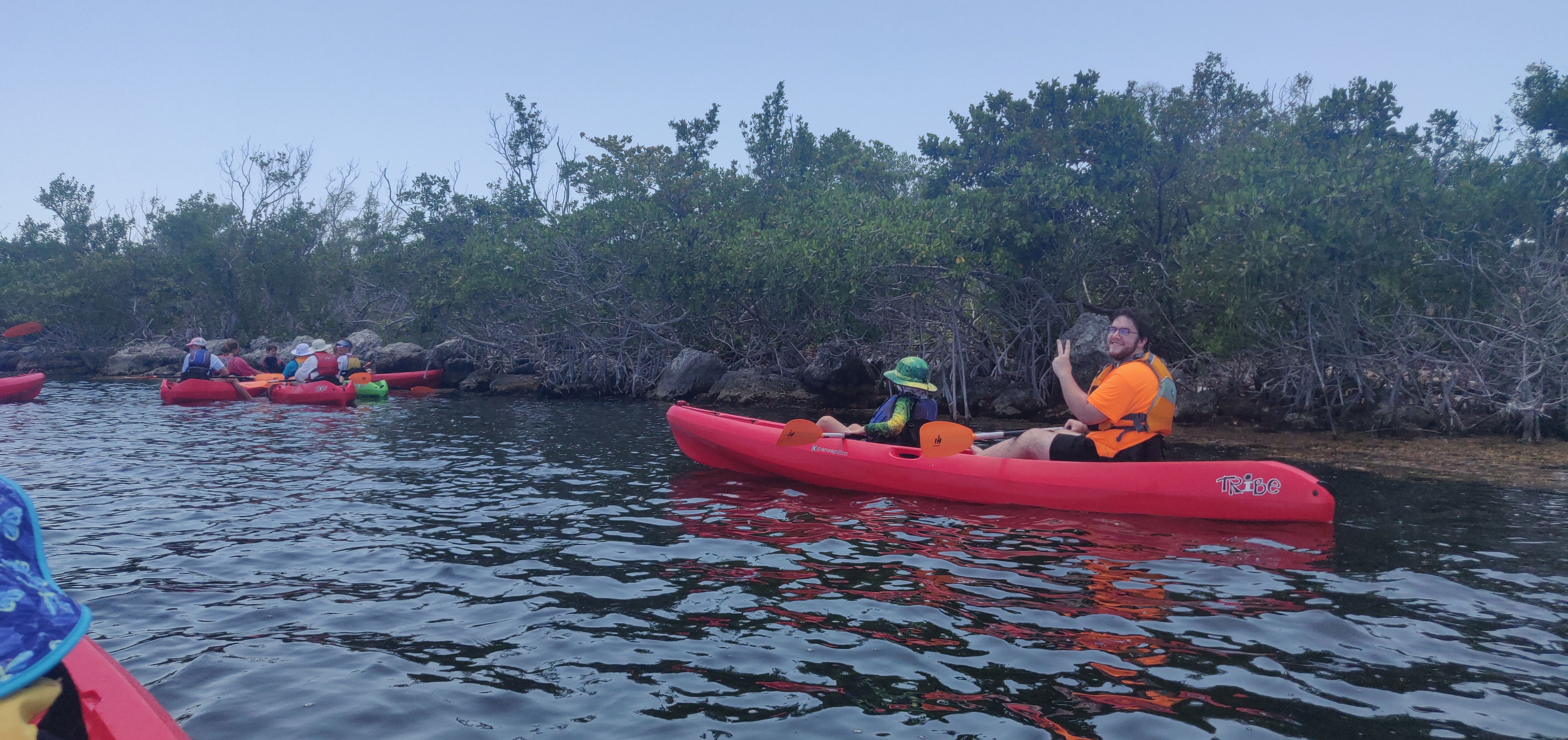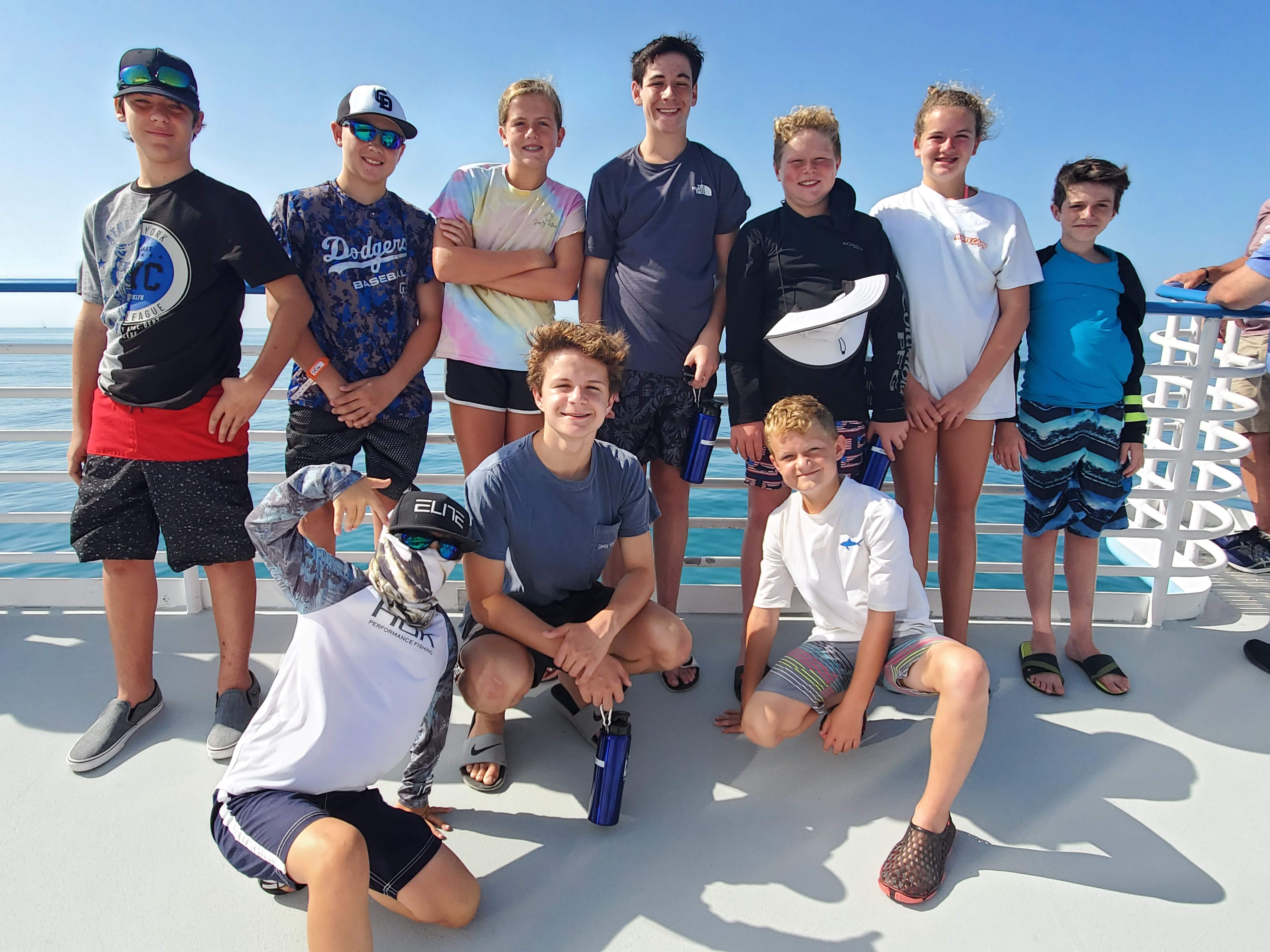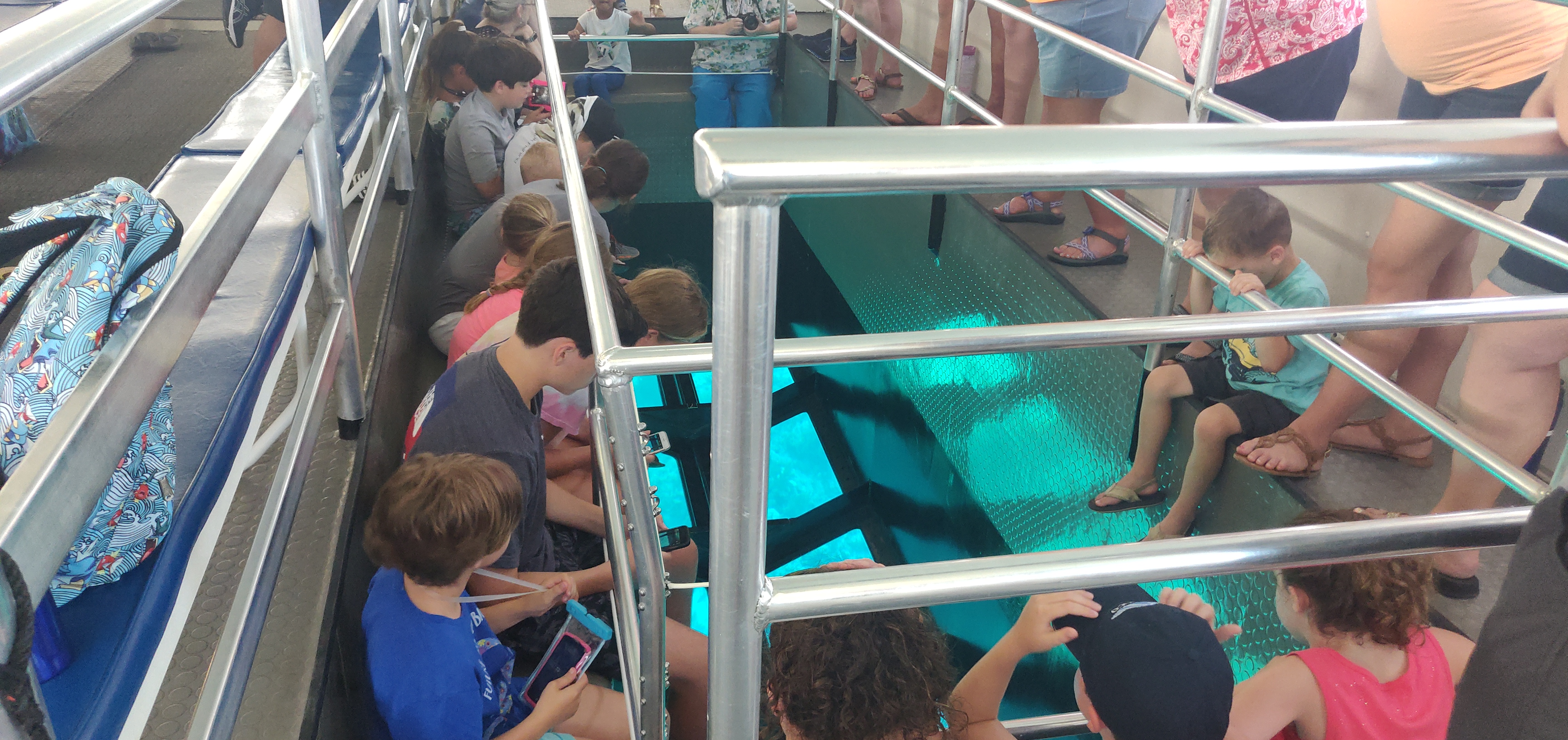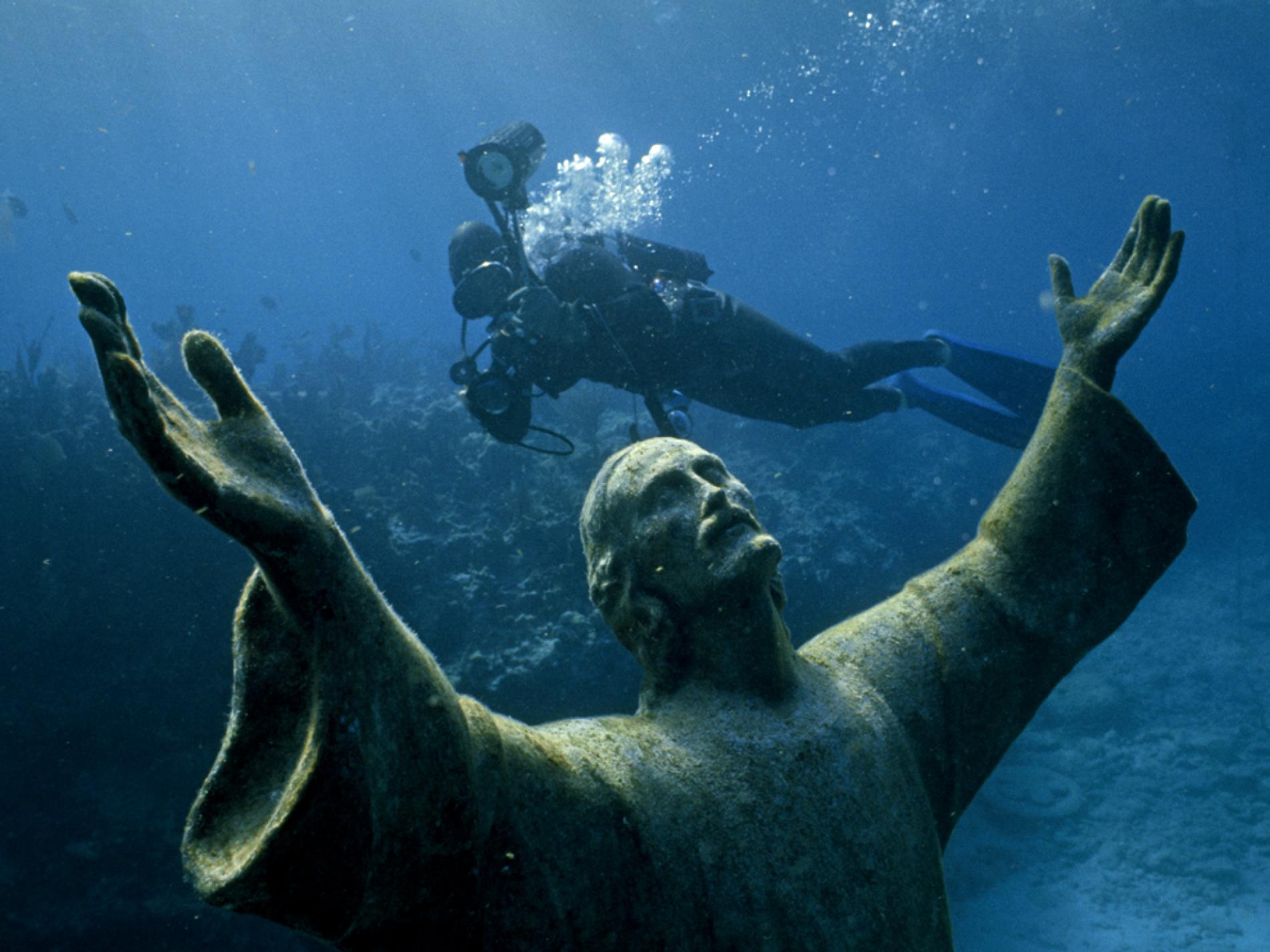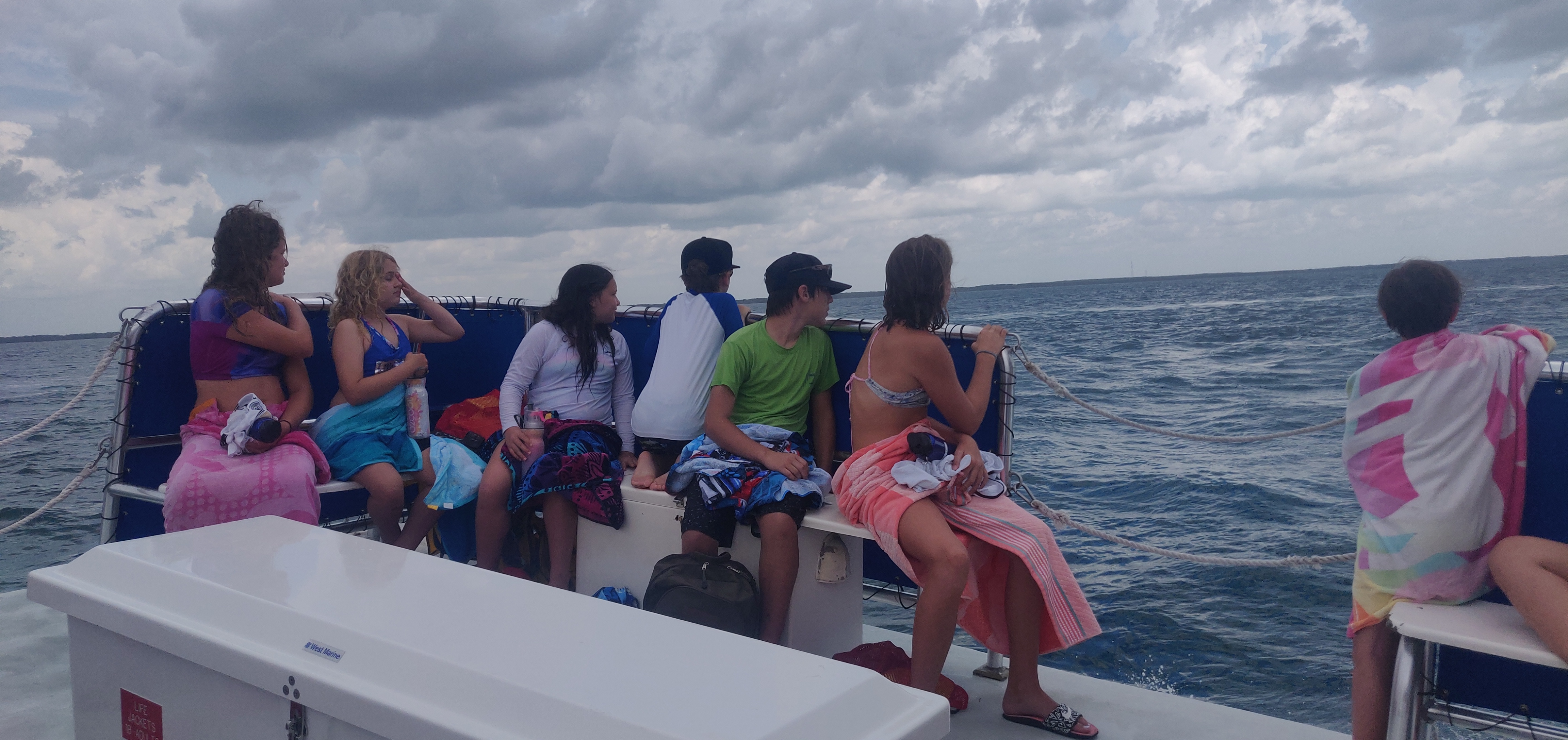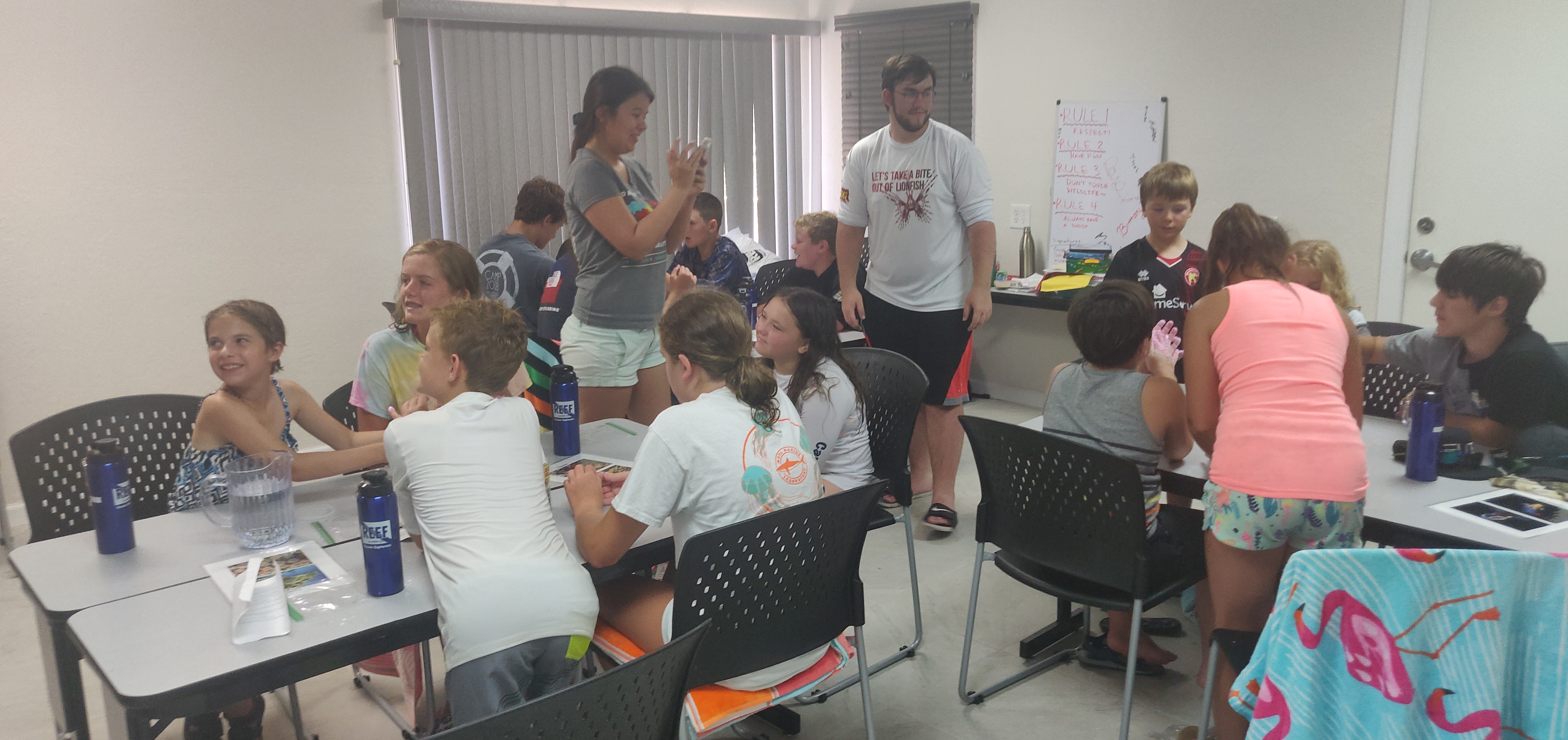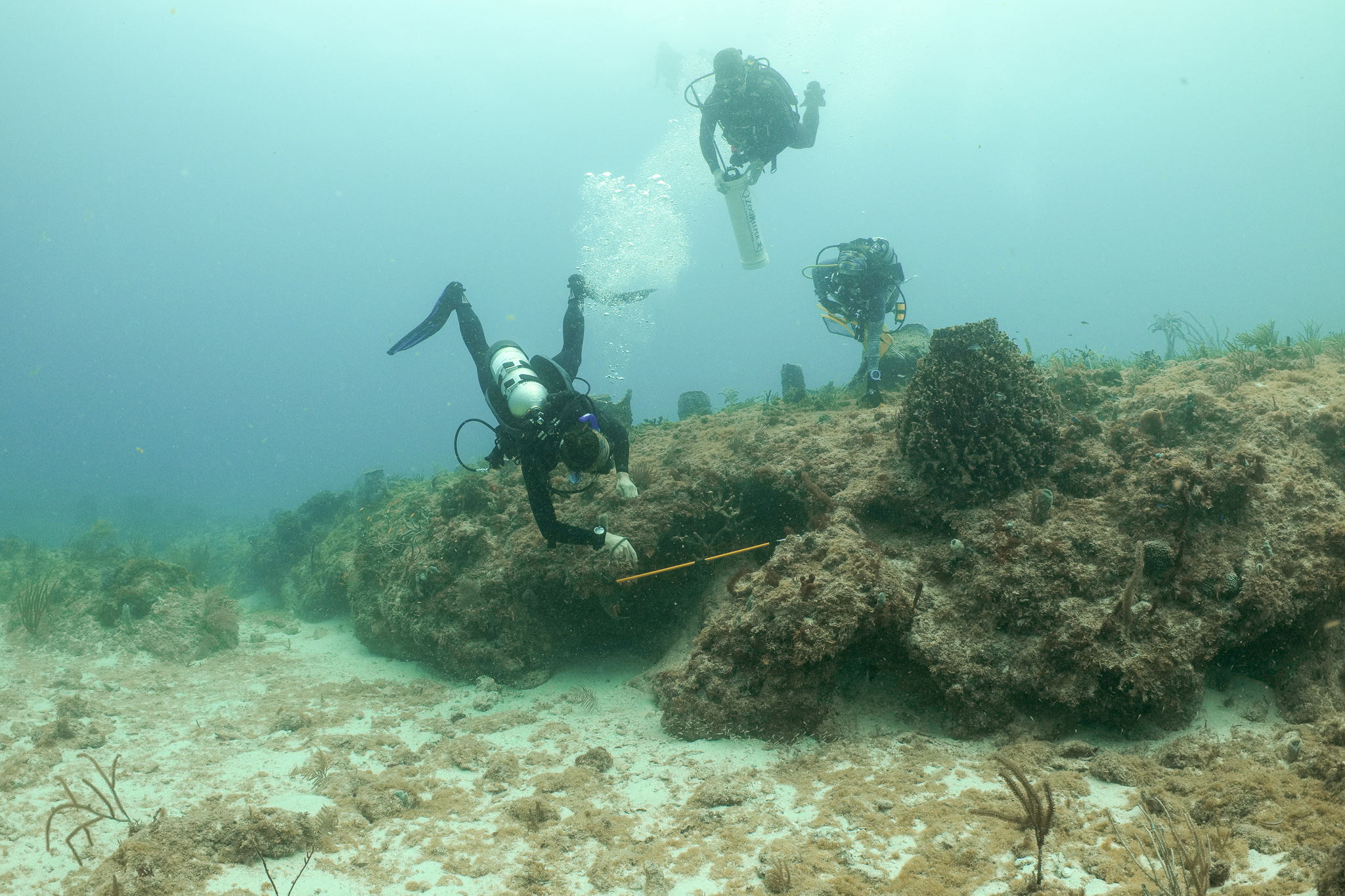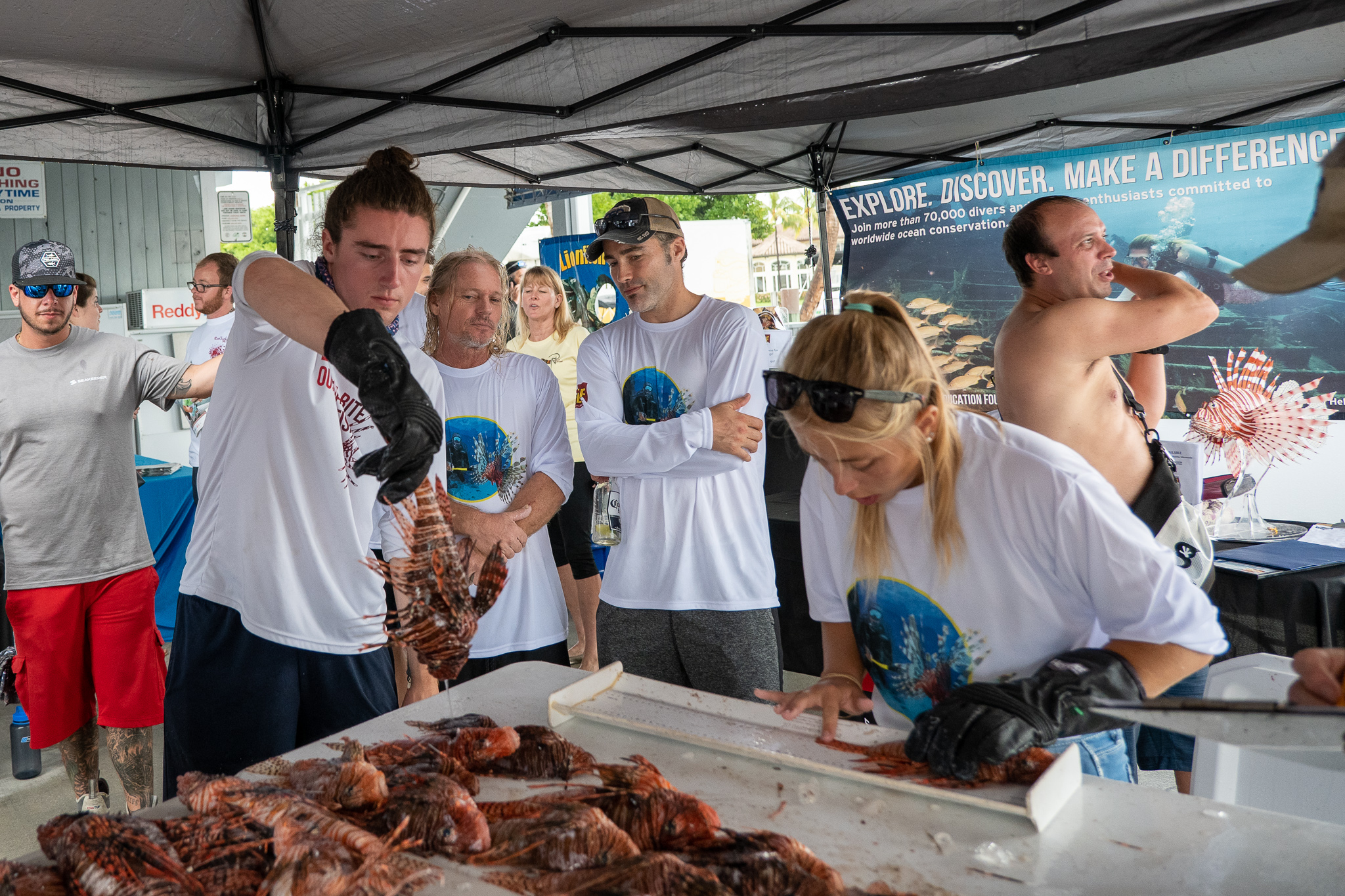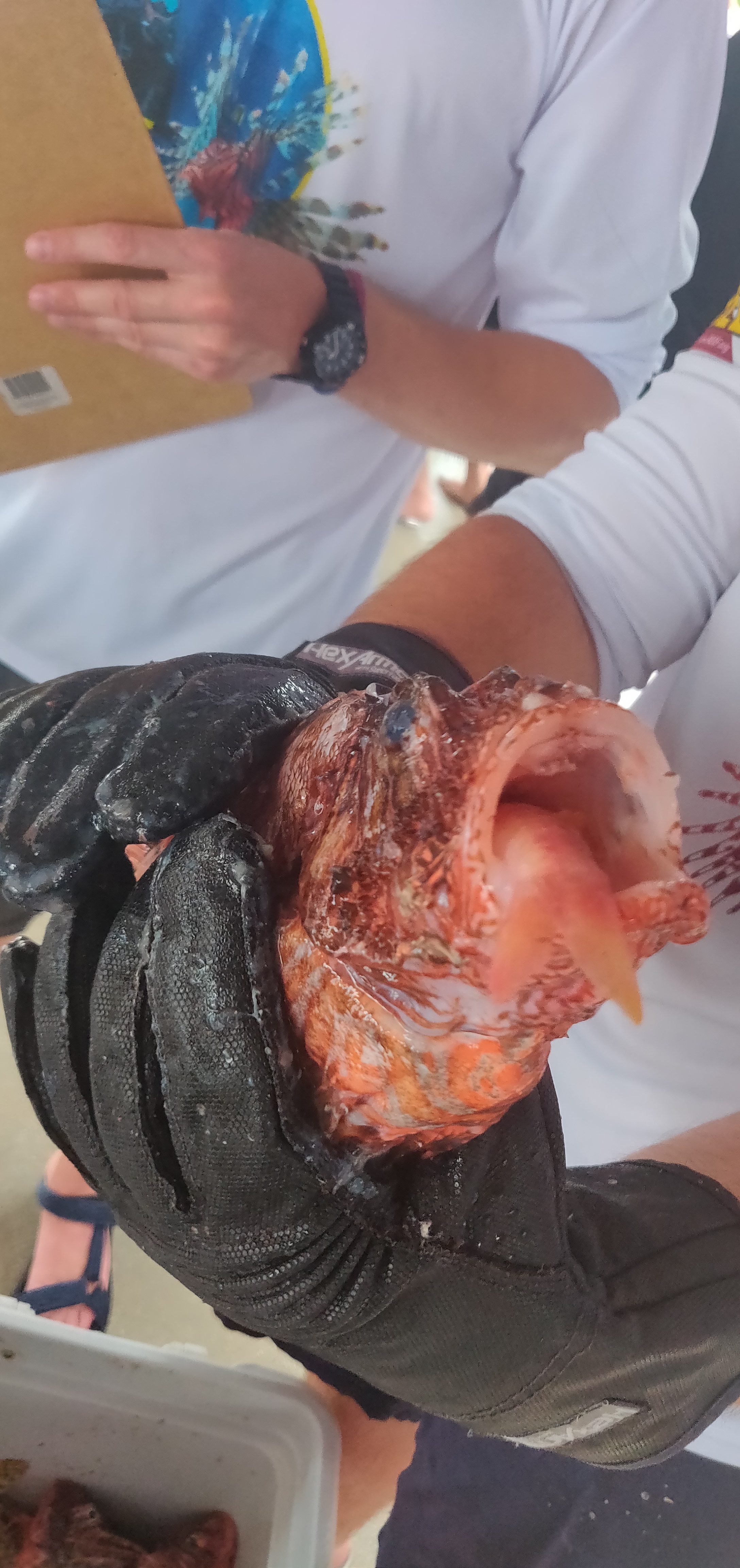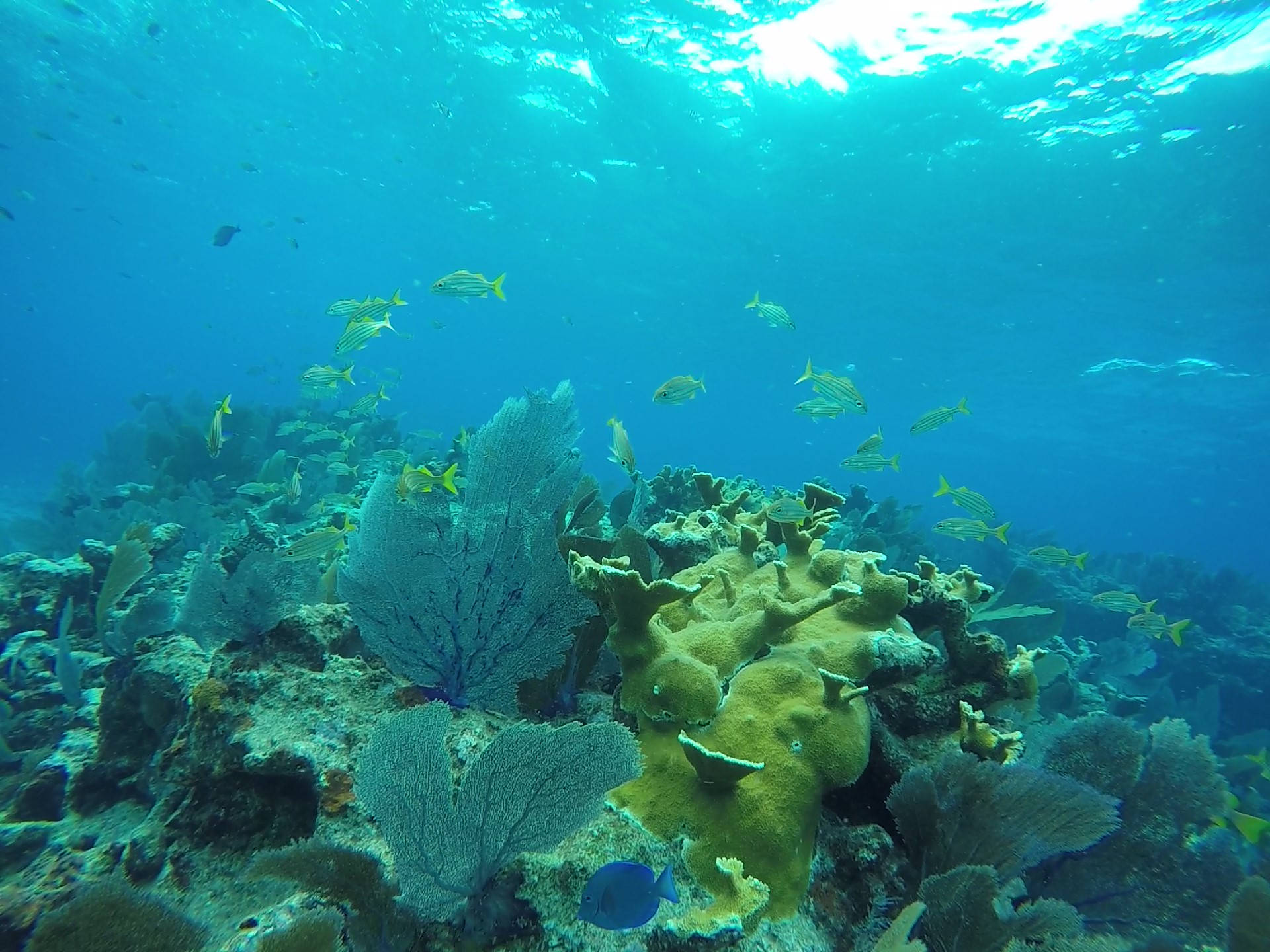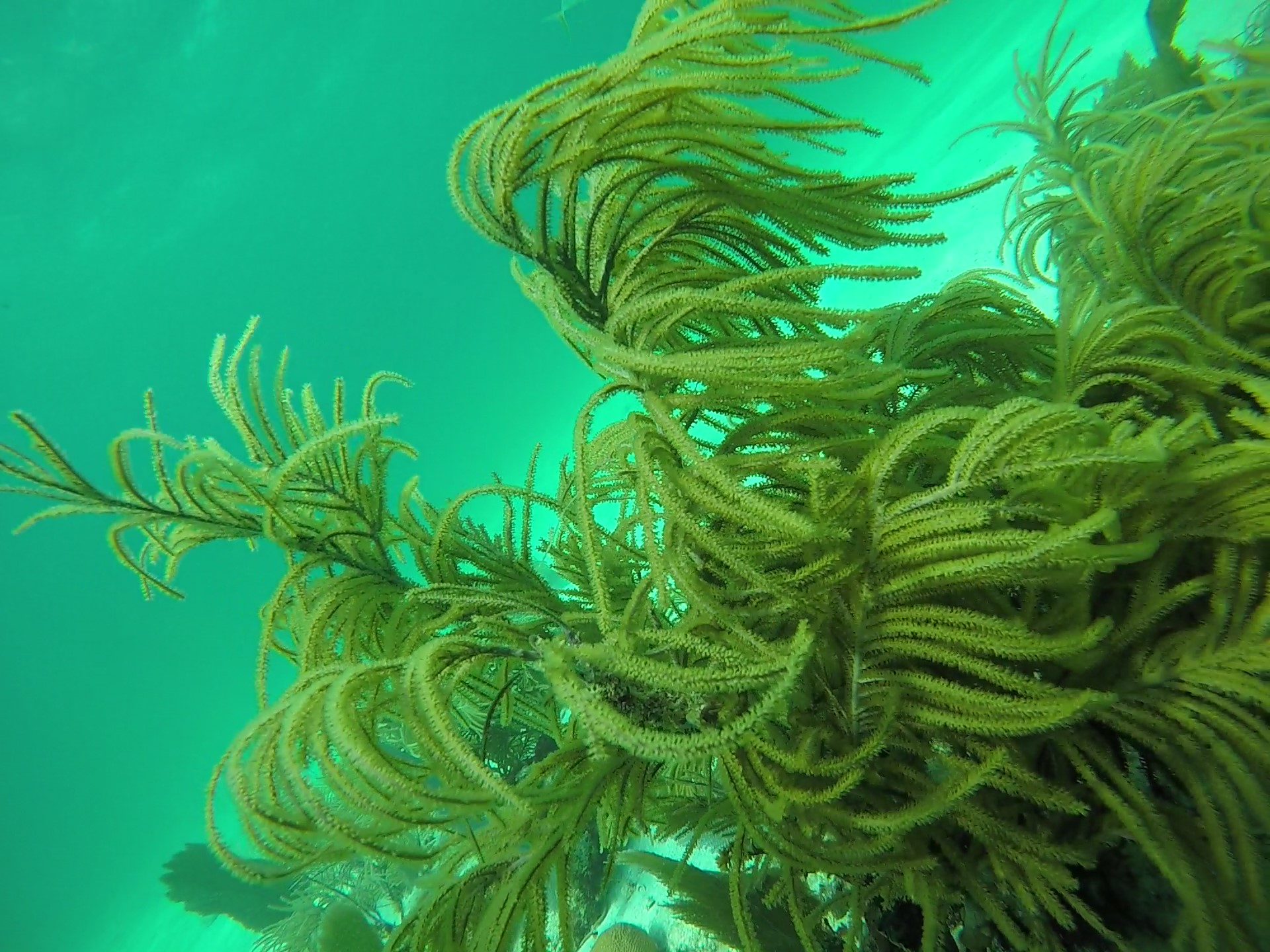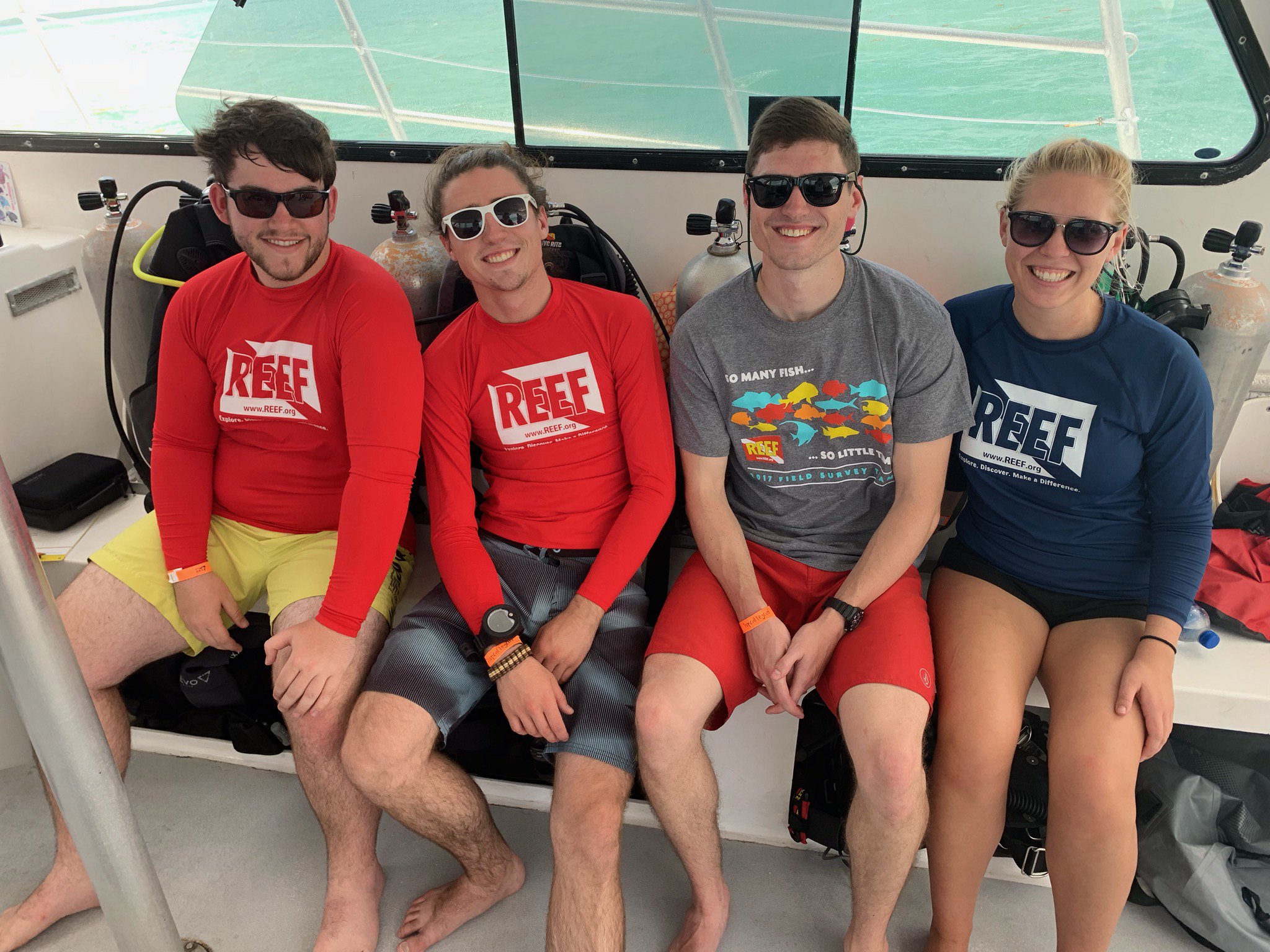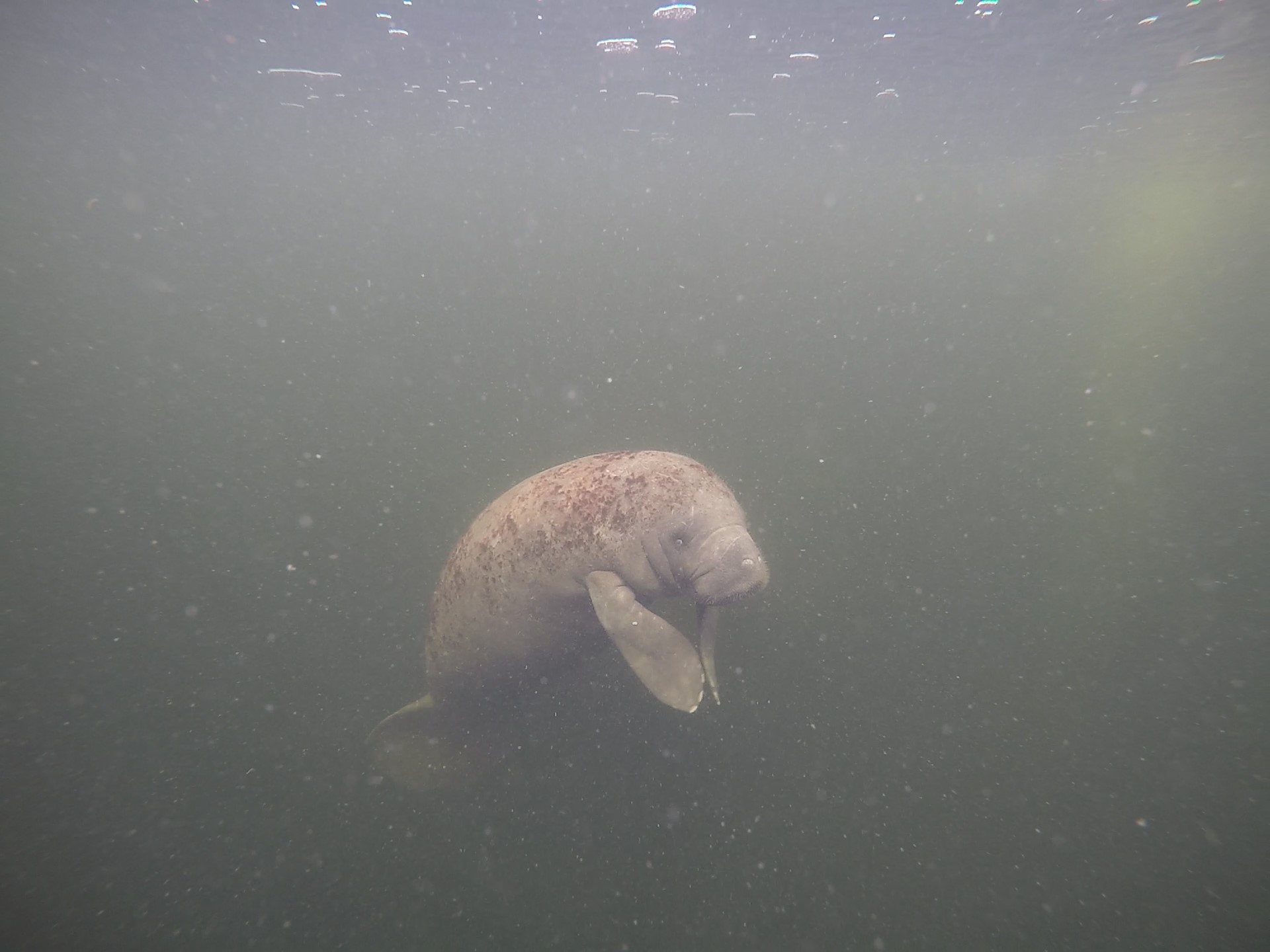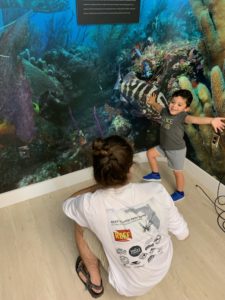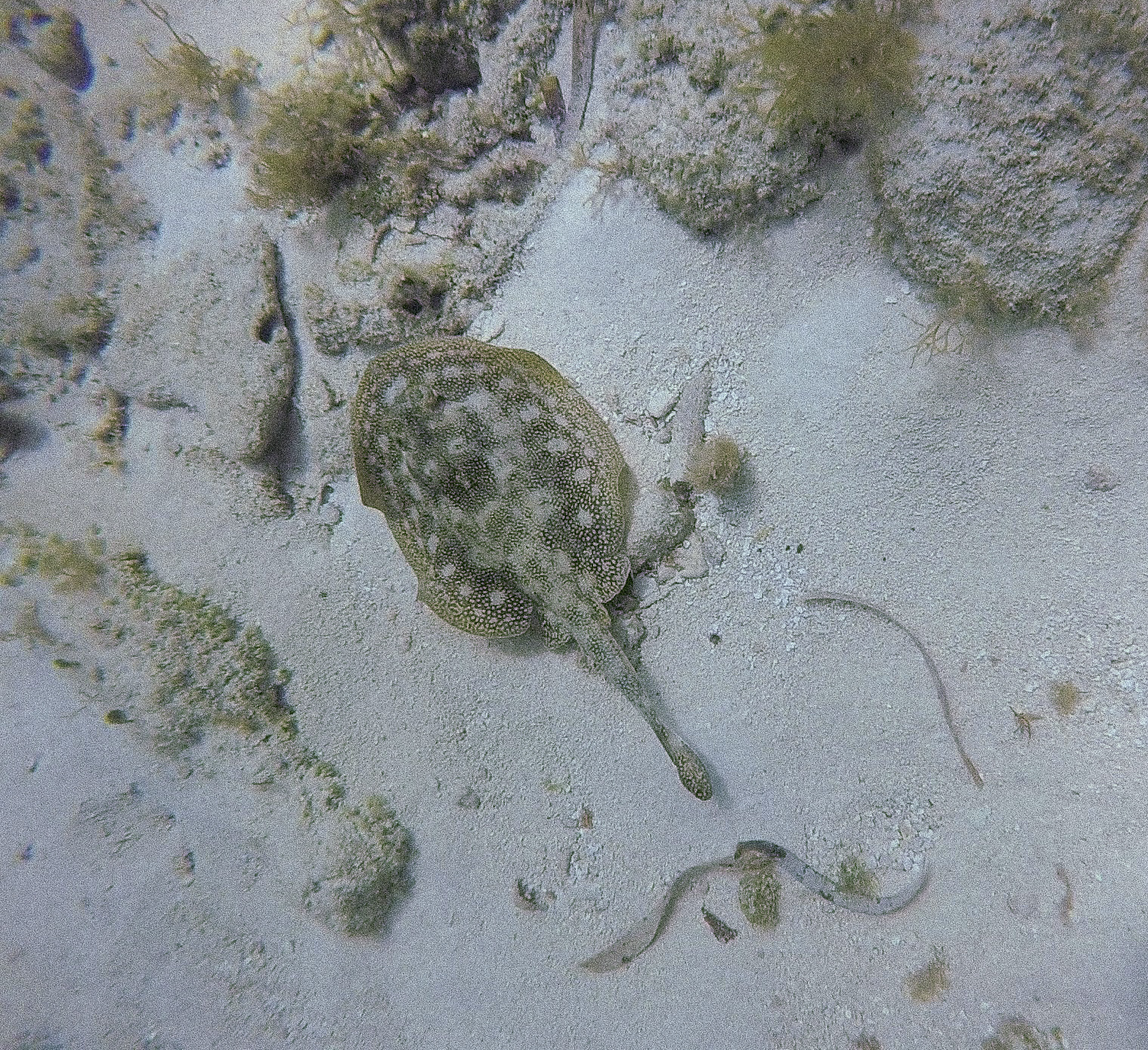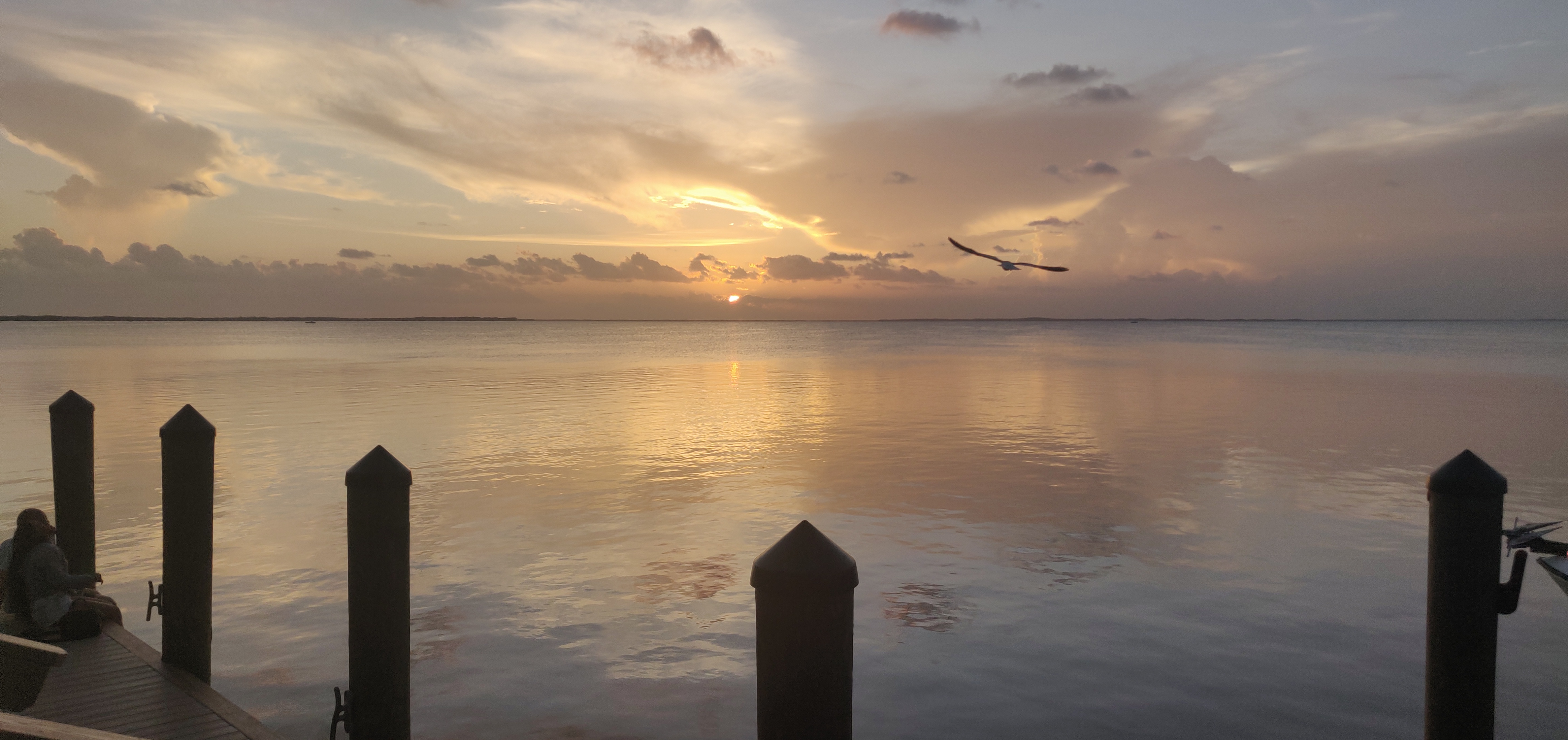
Bayside view from Sundowner’s, Key Largo. Taken while my parents were visiting near the end of my internship
Eleven weeks – it is strange to think how short my internship with REEF this summer truly was. I knew before arriving how fast the summer would go by, but the ephemeral nature of seasonal positions is always a little surprising. Before I reflect on my time in Key Largo, however, I would like to go back to this past April, when my experience with OWUSS really began.
I was just finishing up my senior year at the University of Kentucky, and I was juggling a lot of activities. The deadline for my senior thesis and poster presentation was coming up, and finals loomed just ahead. I was more than happy to take a break from finals and paper-writing the second weekend of April to travel up to New York City, a stark departure from the rolling hills of central Kentucky. This was to be an exciting weekend for several reasons – I had never been to the Big Apple, and I was about to be inducted as a member of both the Explorer’s Club and the Our World Underwater Scholarship Society. On top of this, I was about to meet back up with my friend Liza Hasan, who had recently accepted this years’ AAUS Mitchell Internship. Liza and I became good friends back in 2017 when we both studied abroad in Bonaire, at a research station focusing on tropical marine ecology. We were overjoyed when we found out we had both received internships from OWUSS, knowing how rare and unique of an opportunity this was for each of us. We would also have the chance to see our friend Shannon Brown again (who was the 2018 NPS intern), who was an intern at the Bonaire research station when we were students!
After a redeye flight out of Lexington to Newark, I took in the sights of the big city as I arrived via the bus system. New York was something else – unbelievably tall and expansive, home to countless people accomplishing a million different tasks. This past spring, I visited many big cities for the first time, from New Orleans to Atlanta to San Francisco, but nothing compared to this. The awe I felt simply rolling my luggage down the streets of Midtown Manhattan added to the feeling that I was stepping into an entirely new world with this internship.
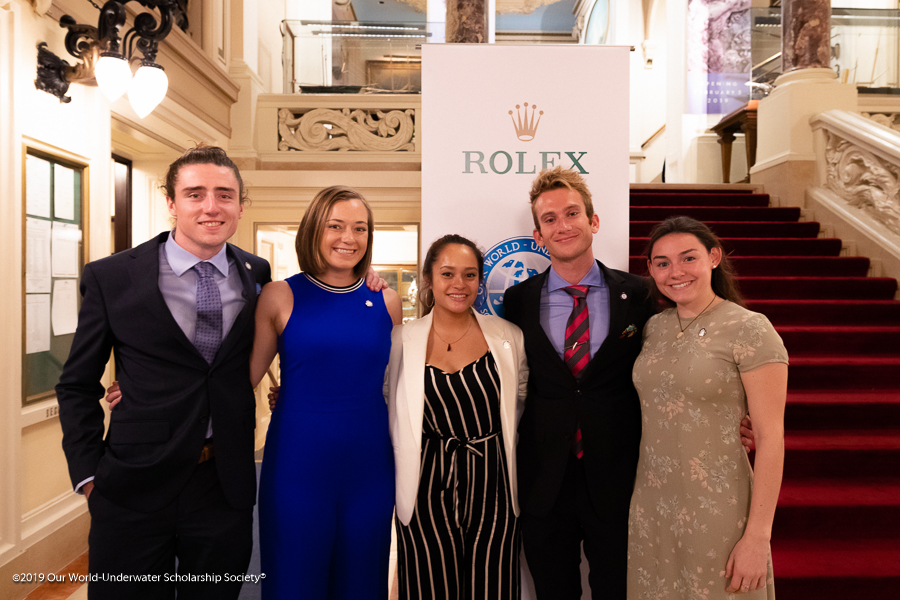
The 2019 interns! Photographed at the New York Yacht Club. From Left: Myself, Liza Hasan (AAUS Mitchell), Kyra Jean Cipolla (AAUS Somers), Michael Langhans (NPS), Abbey Dias (DAN)
The weekend would prove to be a whirlwind, what with meeting all the other interns, to official inductions at the top floor of the Radisson, to a night of dancing at 48 Lounge. We made a wild realization that four out of the five 2019 interns had all had Dr. Franziska Elmer as our research mentor at one point (including me and Liza). And this was all the first night! It turned out that Kyra and Abbey had both completed research projects under Dr. Elmer while studying abroad at the School for Field Studies in Turks & Caicos recently, while Liza, Shannon, and I all knew her through the Bonaire program. All of these seemingly random connections painted a beautiful picture of how the OWUSS community functions – it is there, in part, to get qualified young people in touch with the people they need to, in order to forge a path forward in the underwater world. This would become apparent the next day, when we had several socials and formal events at the Explorers Club and New York Yacht Club, respectively. Everyone in the society was incredibly excited to meet us and hear about our ambitions and university studies, as well as introduce us to past OWUSS interns and scholars. Hearing the presentations of each prior intern/scholar and how they were all going on to do amazing things in their fields directly after their experiences was inspiring. Not only that, but it was a challenge to do great things and build upon my own experience with REEF.
It was with that challenge that I returned to Kentucky to finish out my undergraduate career and then move on to the Florida Keys. But I had one surprise yet in store – just before leaving for New York, I had sent in an application to work as a Waterfront Assistant at the same field station that Dr. Elmer worked at in Turks & Caicos. Just before finals week hit in late April, I received an email saying I had been offered the job! I was both overjoyed and immediately stress-planning about how this would all work. Coming on as a Waterfront Assistant was contingent upon me completing my Divemaster (DM) certification over the summer, since I would start in Turks & Caicos in late August. Thankfully, REEF would end up being incredibly accommodating and allow me to complete my DM throughout the summer (read more here).
And that brings us back to the present. In the time since my last blog post, my time with REEF mostly consisted of wrapping up my personal project and working as a camp counselor once again. These coincidentally were my favorite aspects of being a REEF intern! The flexibility to pursue one’s own project at the REEF office (while not assisting with office work, lionfish derbies, Fish & Friends seminars, etc.) was exciting, especially because of the support offered by the staff. Two of the remote staff, Janna Nichols and Christy Pattengill-Semmens, were instrumental in helping me put together a Quizlet program, as part of the Learning Resources for the Volunteer Fish Survey Project. David gave me the idea early on to produce PowerPoint slides to help surveyors learn all the Beginner, Intermediate, and Advanced fish species of the Tropical Western Atlantic (TWA). I ended up using Quizlet instead, and developed lists of all the relevant species for each tier of difficulty, and then matching up photos with the common and species names of each species. Part of what was so exciting about this was that in the process I became much better at identifying TWA fish myself. What made this really rewarding, though, was the knowledge that my work would reach a wide, potentially international audience through the REEF website. Christy and Janna helped me get my Quizlets integrated directly into the website (see here). Not only that, but now REEF staff and volunteers are putting together Quizlets for every other region, making it truly accessible for anybody that wants to learn fish ID of a region anywhere in the world. One of my main goals going into the summer was to make the science that we do in the marine world more accessible, and I could not have been more satisfied with how this turned out.

It was (almost) always a joy working with the kids at Ocean Explorers Camp. Can’t beat a re-creation of the Titanic
As my personal project winded down, my last week at REEF ended up being as a camp counselor again. I never expected to love working with the kids as much as I did, but couldn’t have been happier having another go at Ocean Explorers Camp. This time I went in with a bit of experience under my belt, and made a commitment to do things a bit differently. I made a concerted effort to spend more time getting to know each camper, instead of just a few (as fun as getting chased around by Dakota the first week was!), and in doing so I feel that I connected with the kids pretty well. It was incredible seeing how quickly they could absorb knowledge about the ecology of the Florida Keys, and it gave me a chance to improve my interpretation skills. I have learned that kids in the 8-12 age range are perfectly equipped to learn a ton of information in a short amount of time, but only if you manage to keep their attention for more than a few minutes! A big part of that was figuring out how much each kid already knew about fish, corals, etc., and then not underestimating their knowledge, but instead building on what they already know and were interested in. I was surprised at how quickly I got back in the flow of being a counselor that week, and honestly I could see myself working in some marine education for children again in the future, whether through a job or as a volunteering effort. None of the kids gave me any adorable collages this time around, but I still felt a connection with them and won’t soon forget their unabashed excitement for the underwater world.
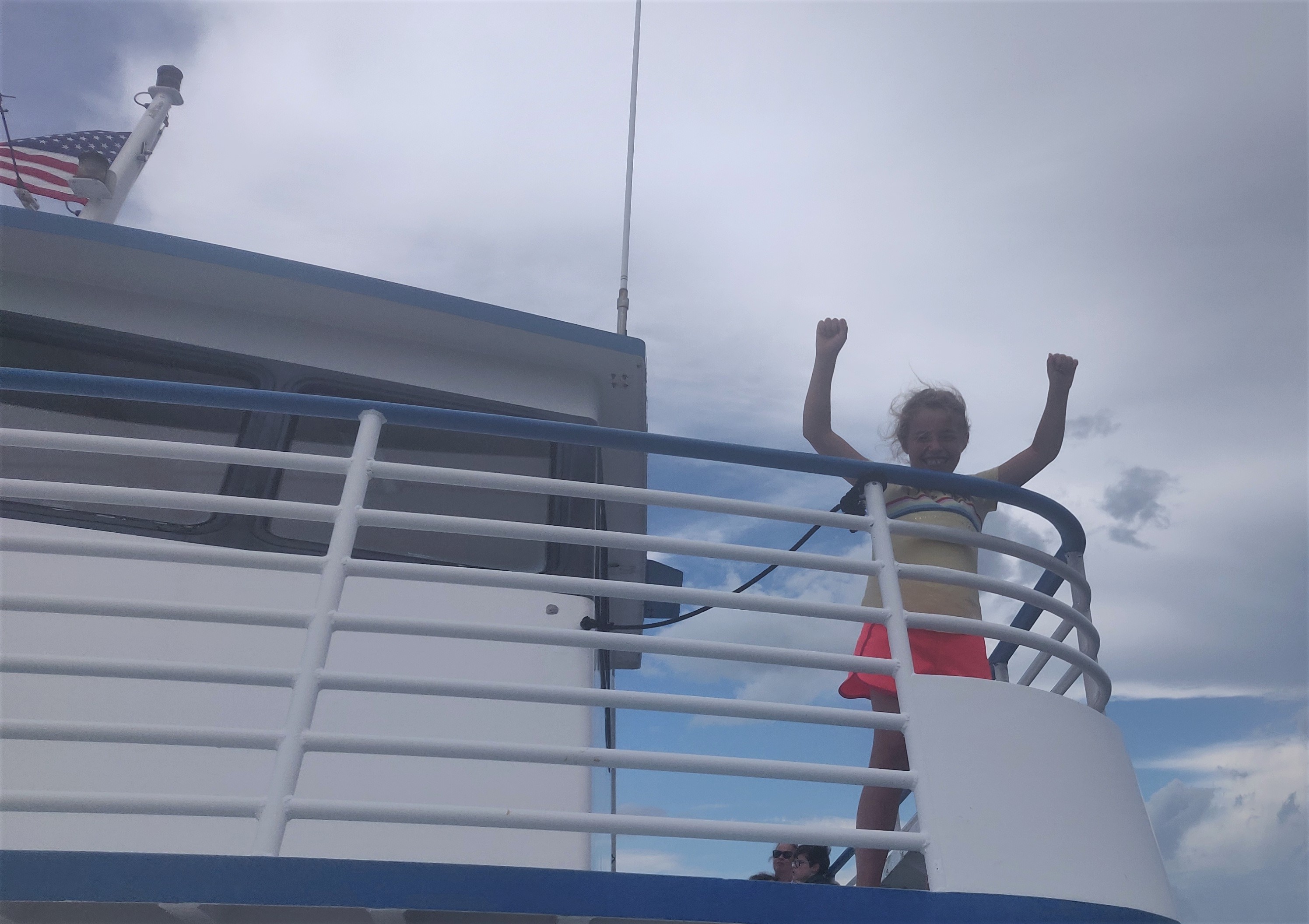
Natalie had her turn as the captain! Taken while out on John Pennekamp Coral Reef State Park’s glass bottom boat.
With that final week at REEF completed, my internship now consisted of intensive Divemaster training through the first week of August. I had finished the bulk of my training requirements throughout the summer, on days off and over the weekends, however there were still my final written exams. With some feverish last-minute studying and review of decompression theory, I passed both sections of the written exam! Now it was time to get more time out on the boat and actually leading dives. I had already led a couple dives, covered in my third blog, but it was important to see what it was like leading dives for tourists/locals of various experience levels from morning to close, and then coming right back the next day and doing it all over again. That is how I learned to deal with the random challenges that popped up day-to-day, such as what to do when someone’s gear from the prior day got left at home, or how to lead a dive for a customer who lost their certification cards. On top of that, I was very happy to get the extra experience leading dives/working the boat, since that is what I will be doing for students in Turks & Caicos for the next year. Key Dives was the perfect shop to learn from this summer, largely because it was such a small shop with a tight-knit staff. They all expected the very best of me and pushed me to learn from my mistakes after every dive, even the small ones. If I momentarily lost where the mooring line was and had to ask for a direction, you can bet I was given some constructive criticism about it back on the surface. I had to learn quickly, and ultimately it all paid off. By the end of my DM training, I was very comfortable leading dives, pointing out rare fauna unique to certain sites. I was lucky enough to spot more than ten bonnethead sharks on a dive over a seagrass-heavy area on my very last trip with Key Dives, and the group I was leading was loving it.
With that last day at Key Dives, my internship officially concluded. However, I will soon be taking everything I learned to new shores in Turks & Caicos. I can’t say enough how thankful I am to everyone at REEF for helping make this summer incredibly memorable, as well as vital for my professional development. With newfound experience in everything from K-12 outreach to dive briefing, I am equipped to move forward in the field of marine science as a much improved educator. My time at REEF may be over, but I cannot wait to see the great things that future REEF/OWUSS interns go on to do next year!

